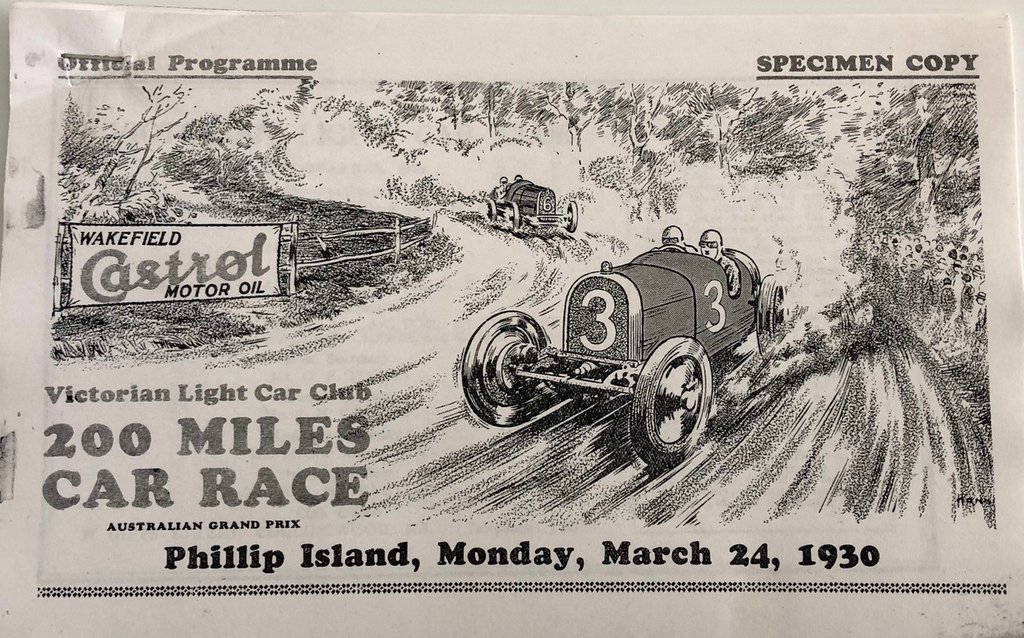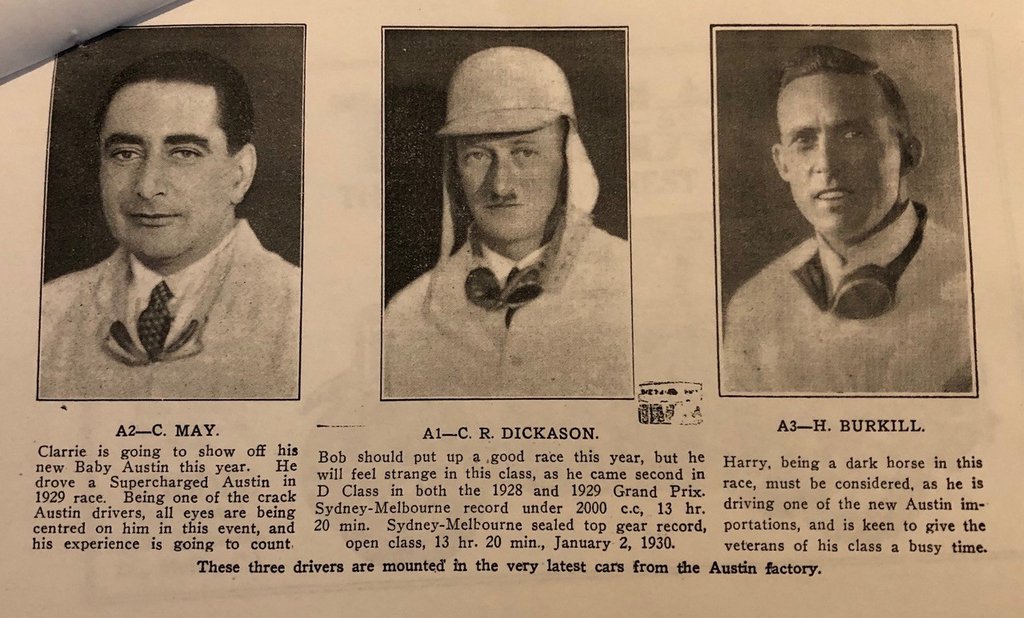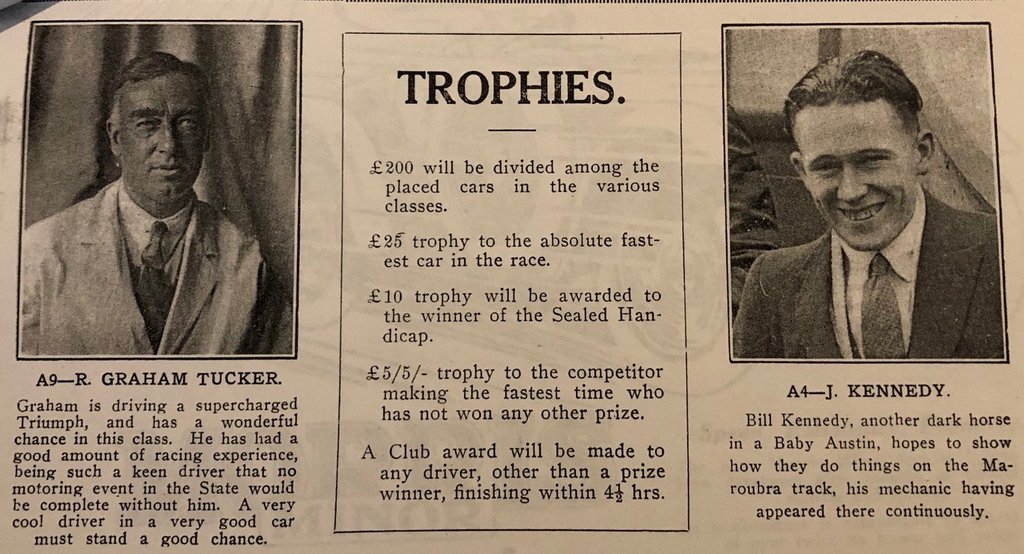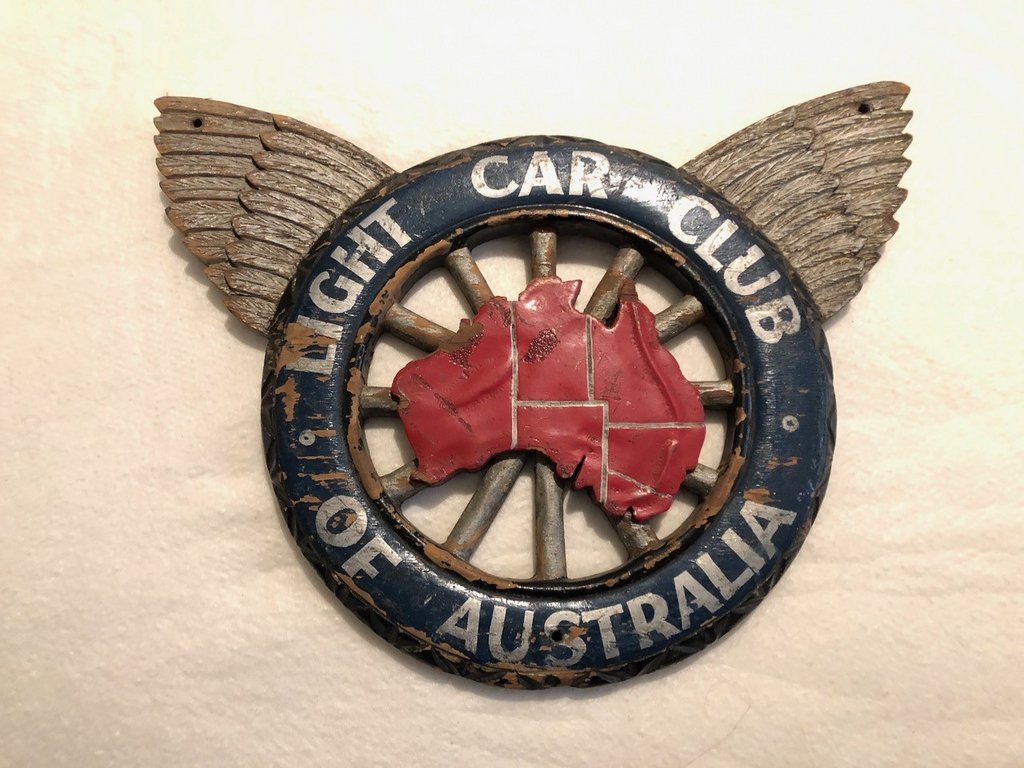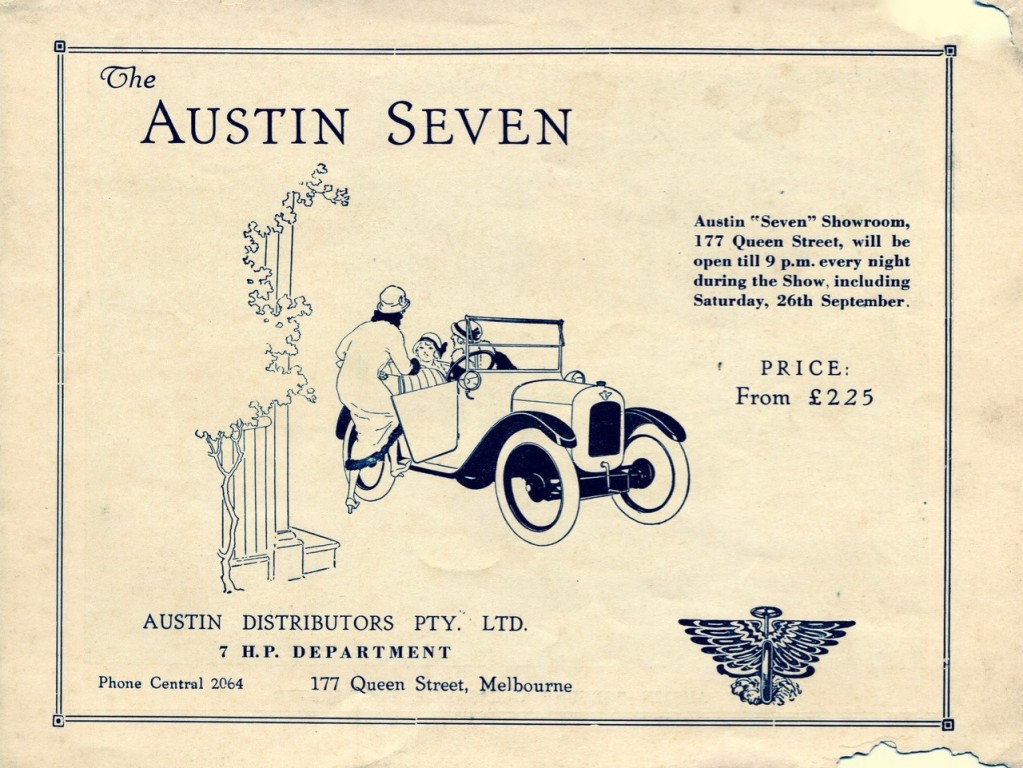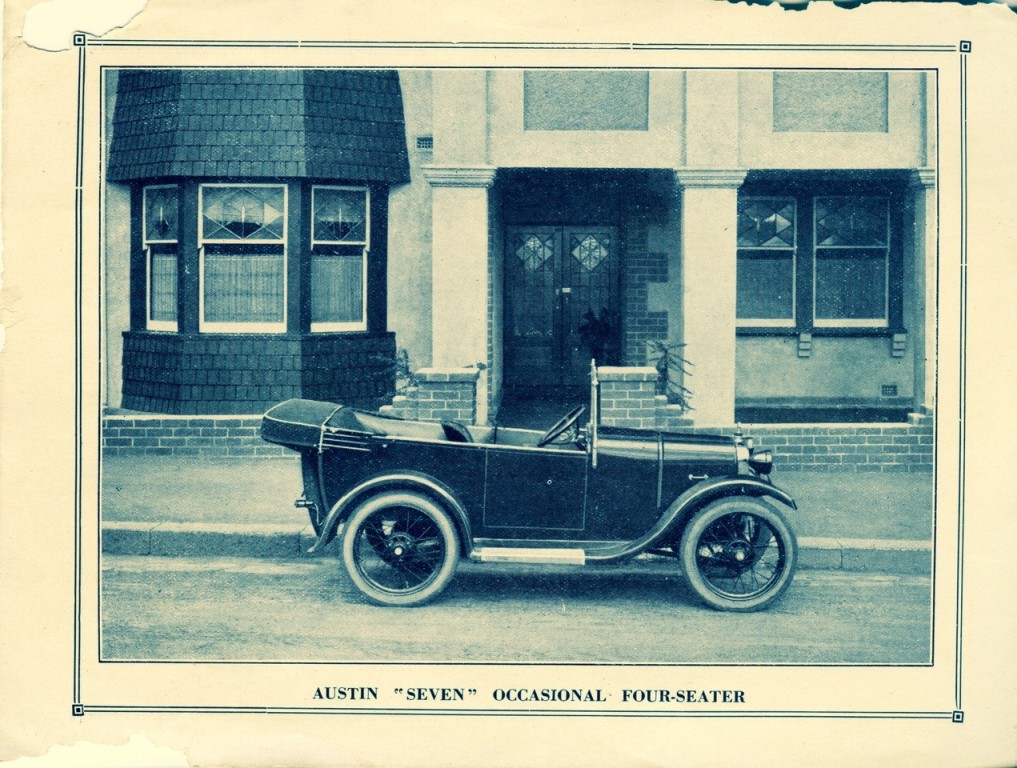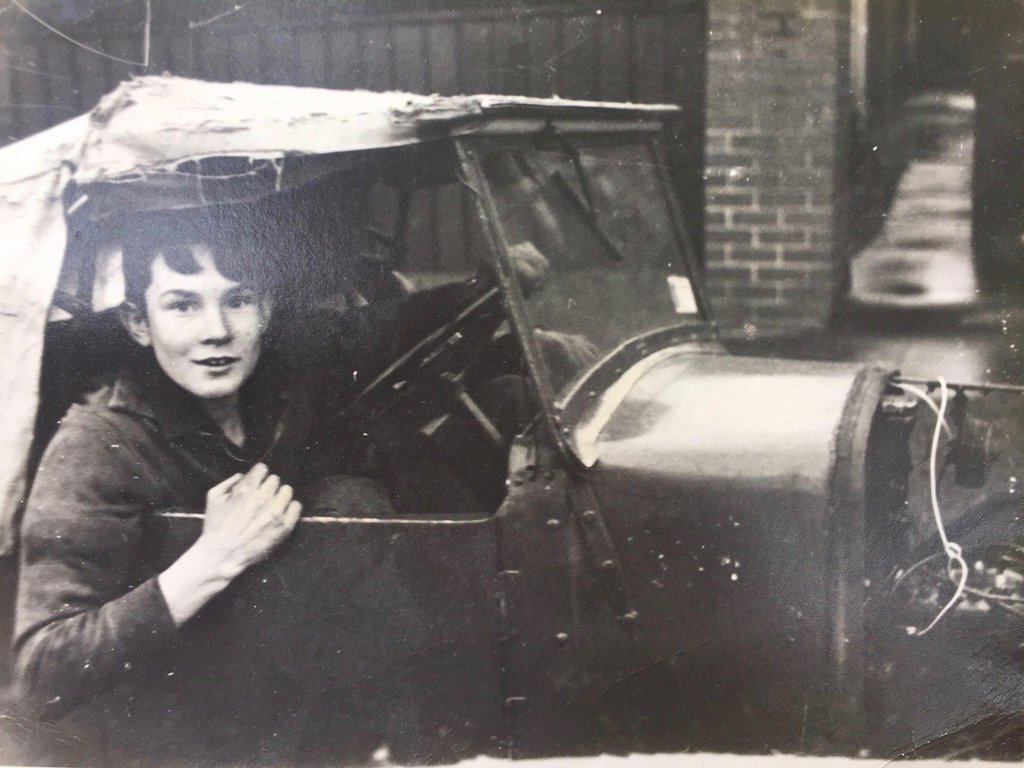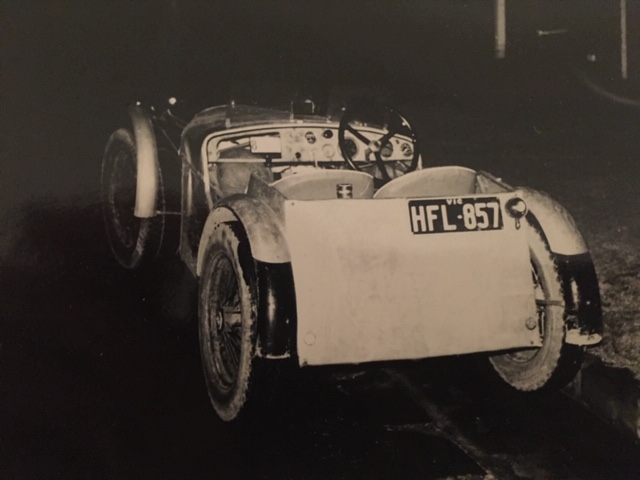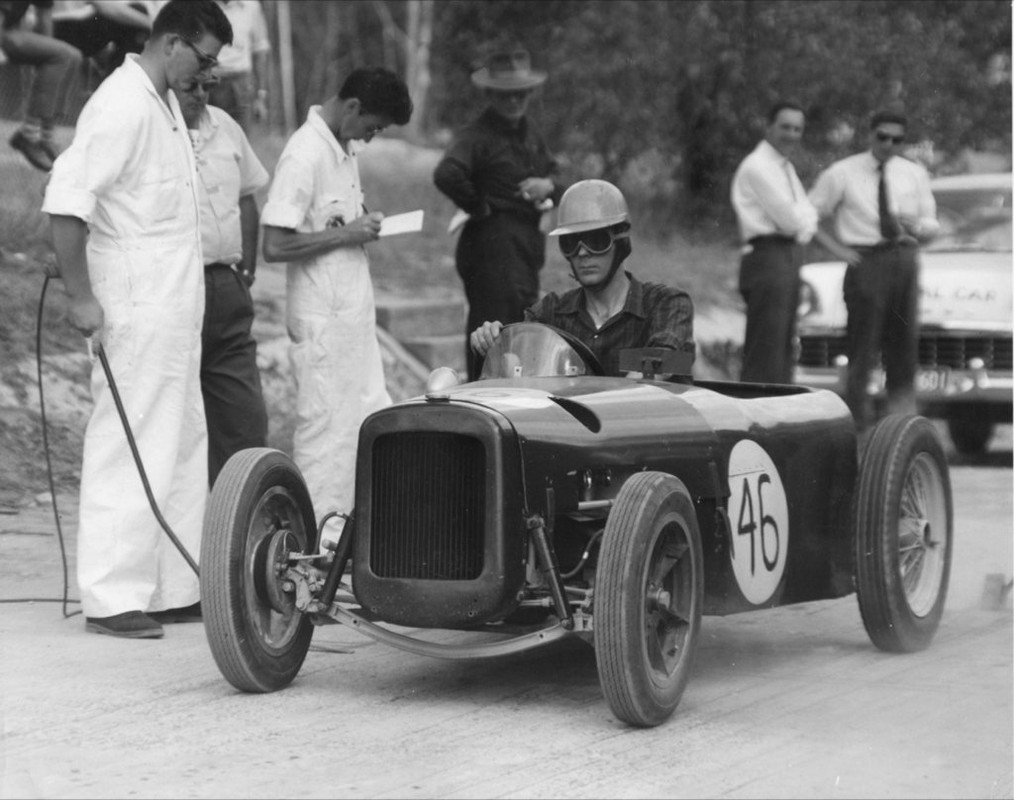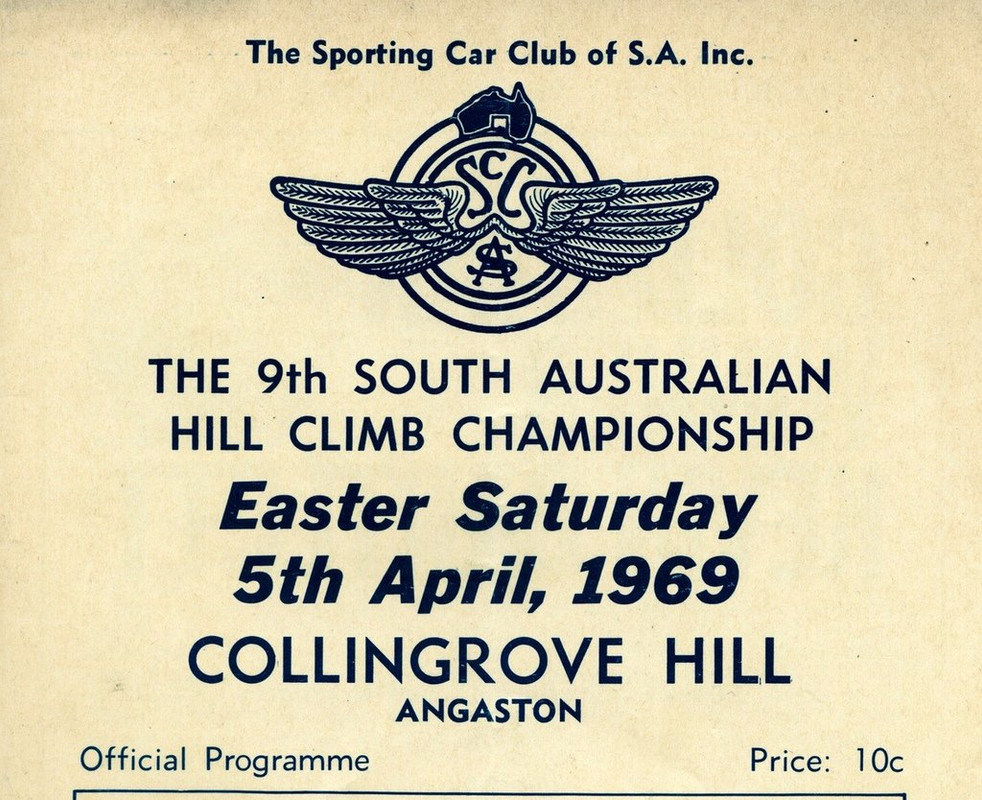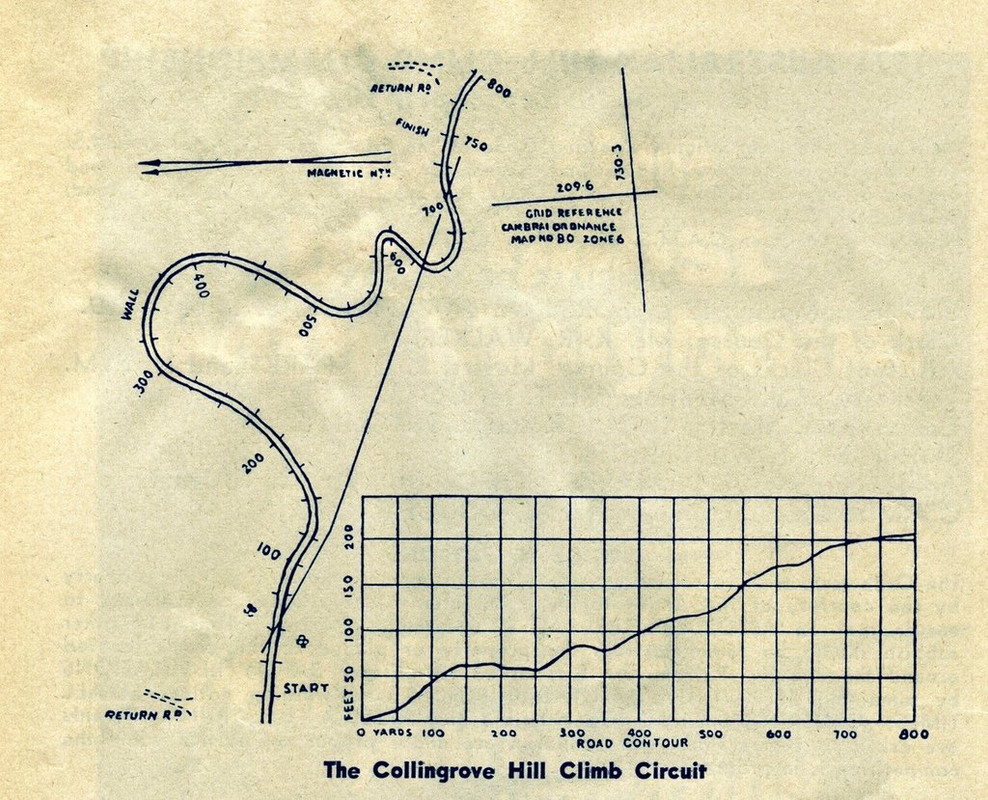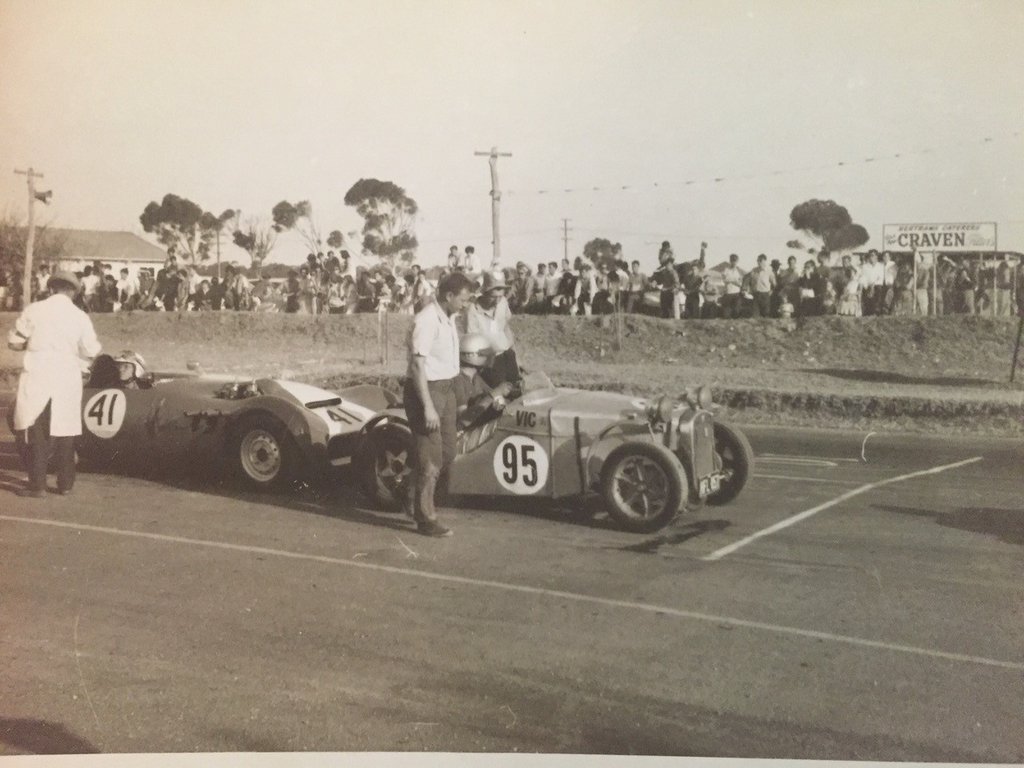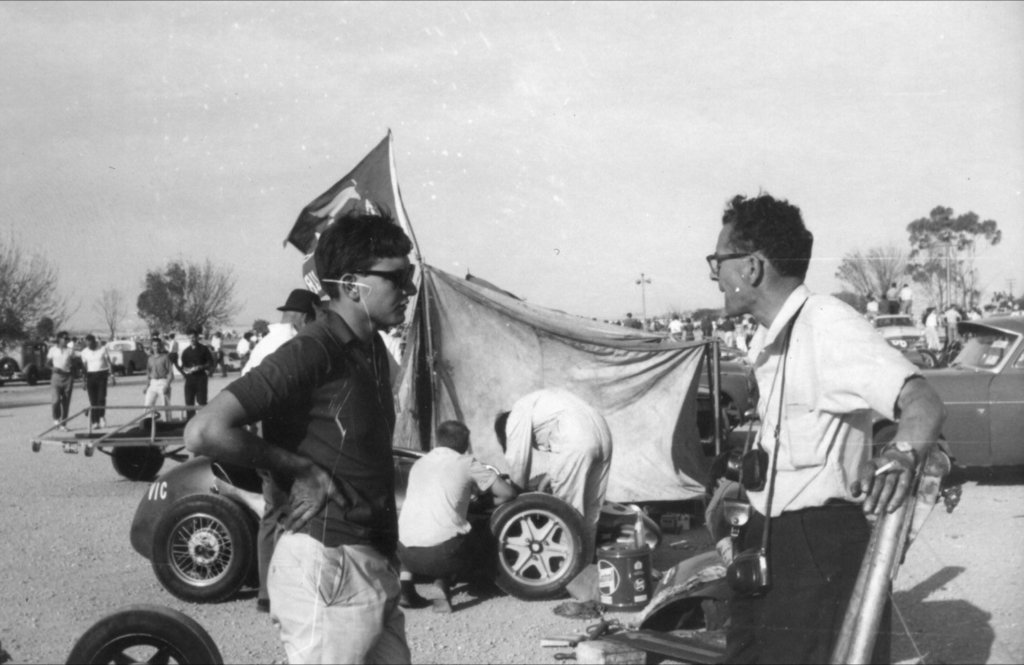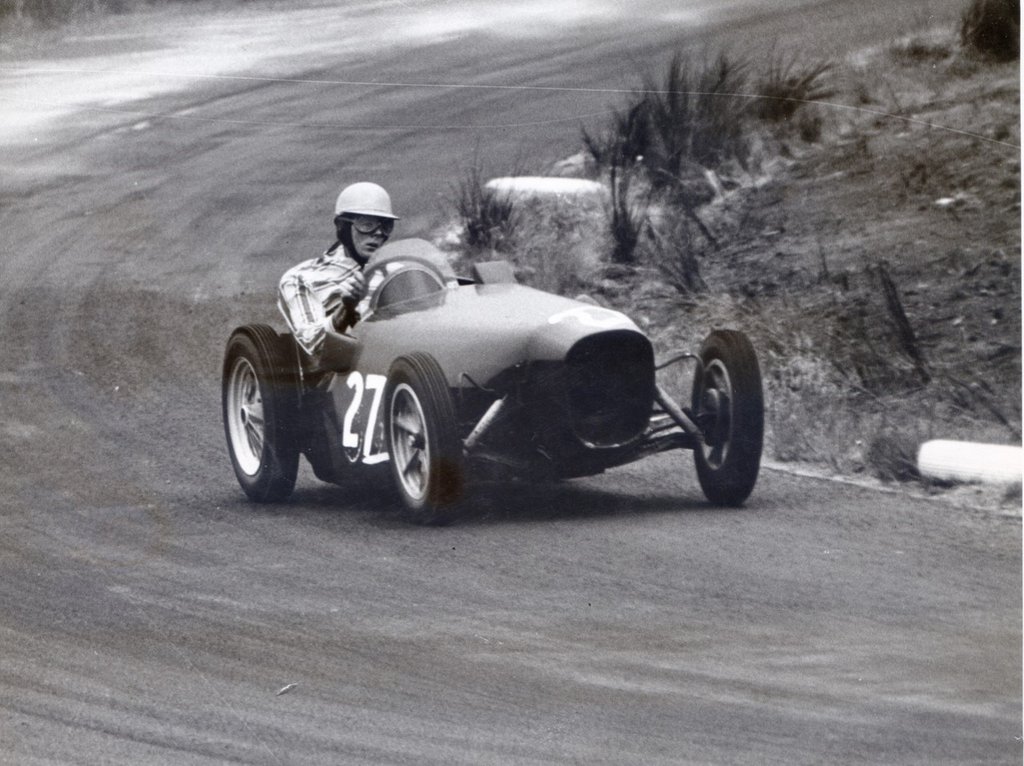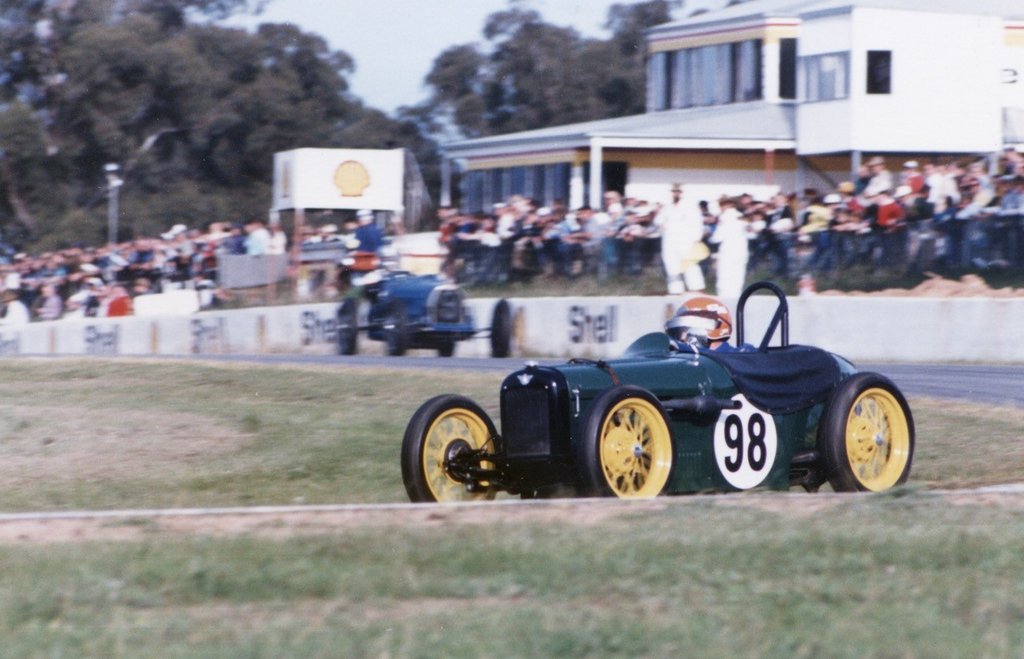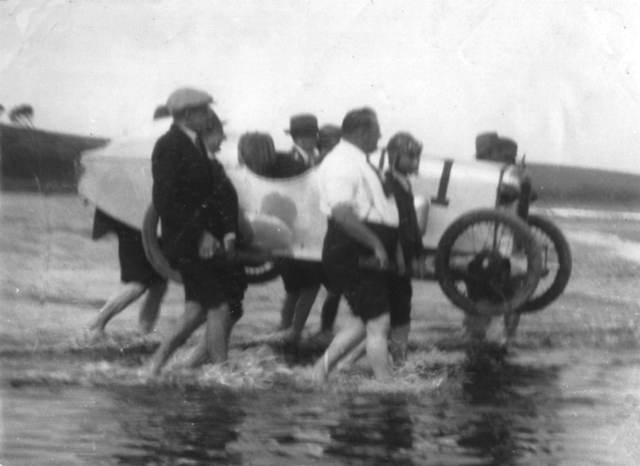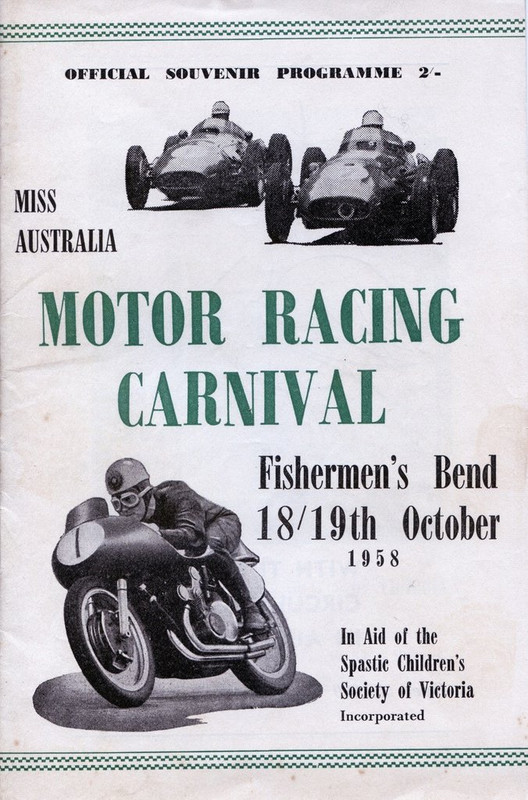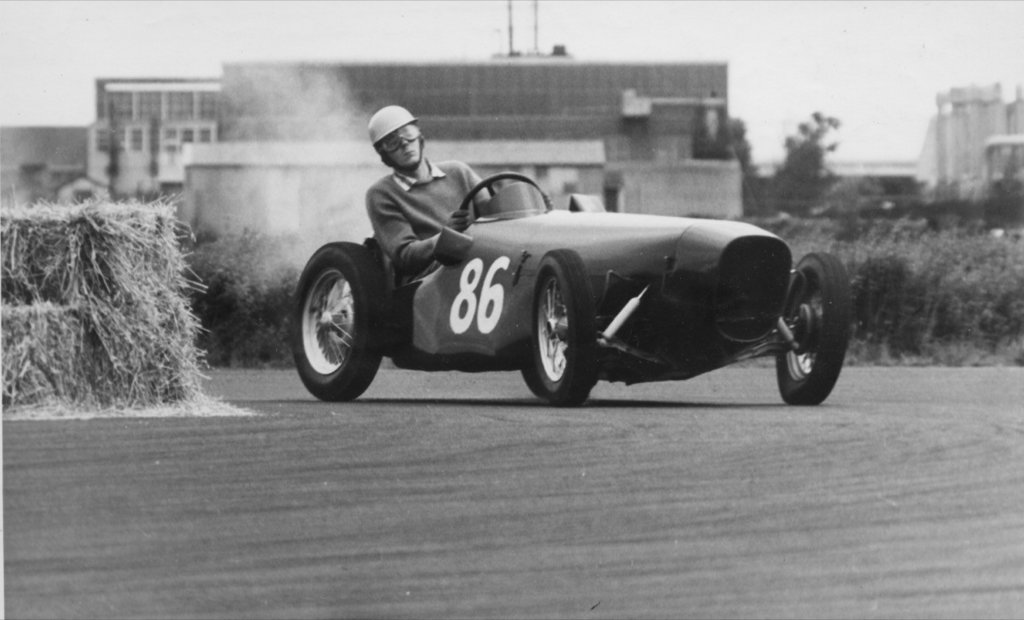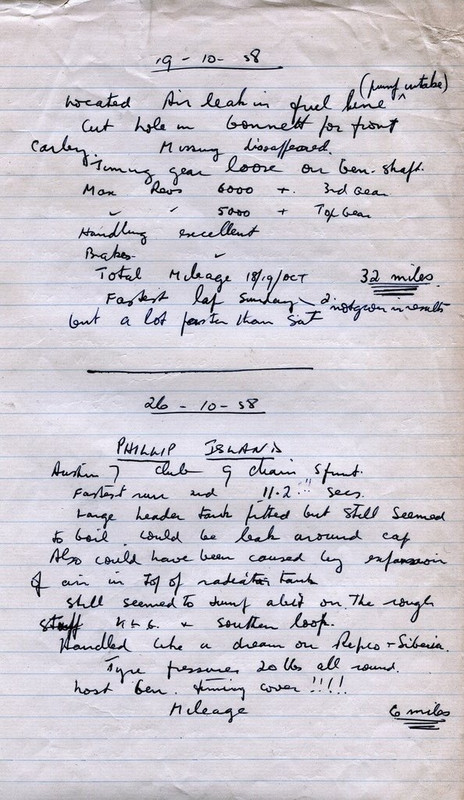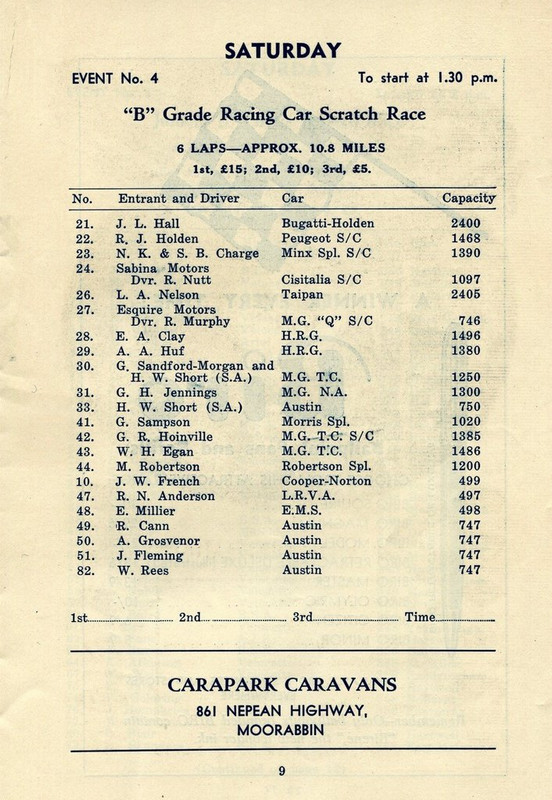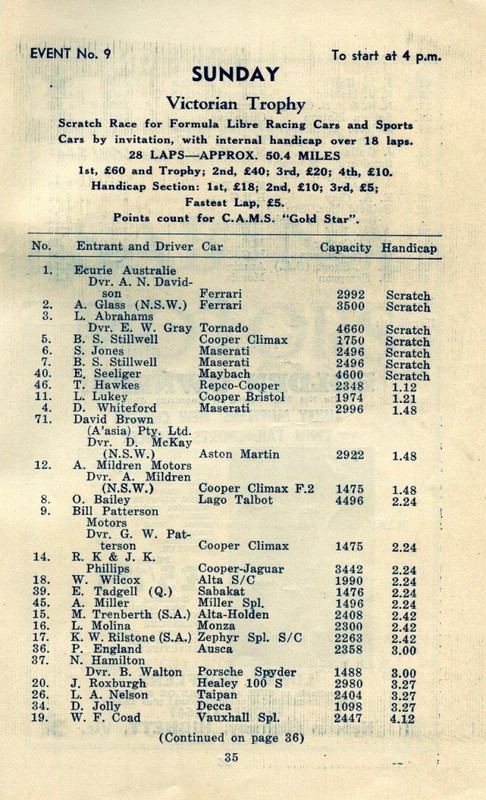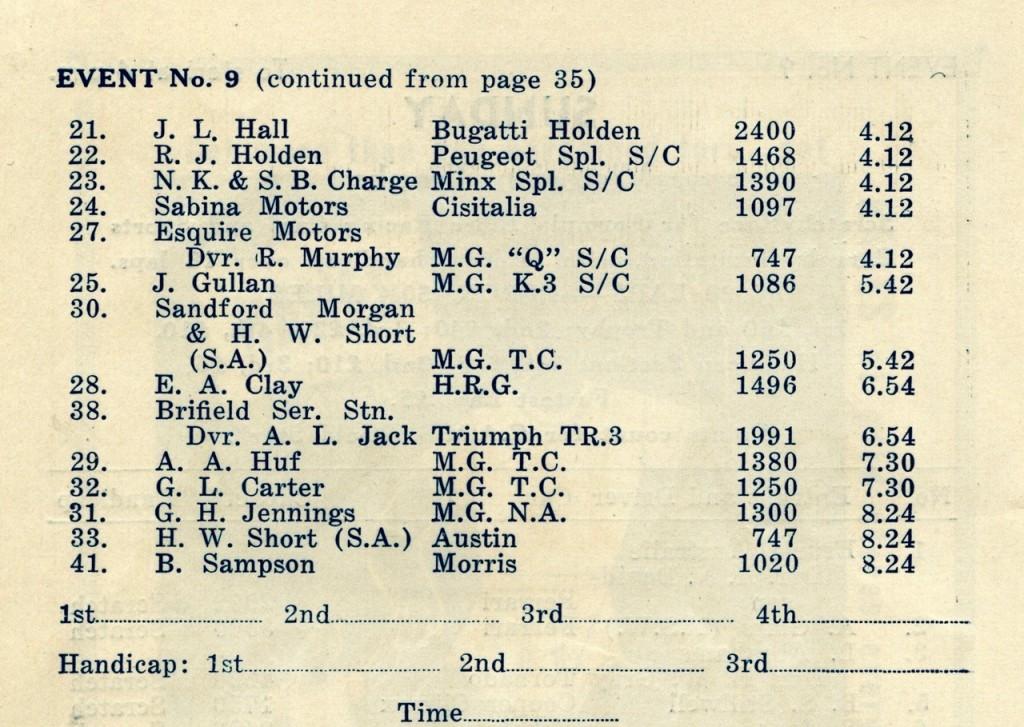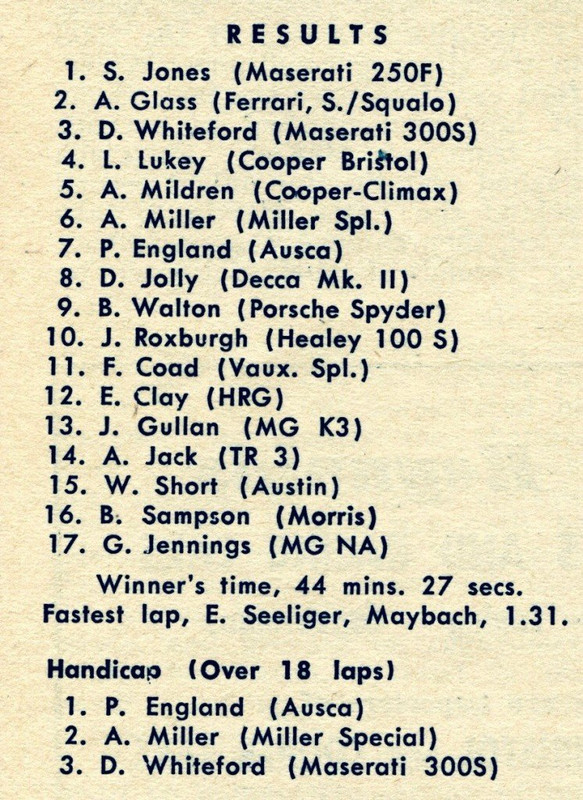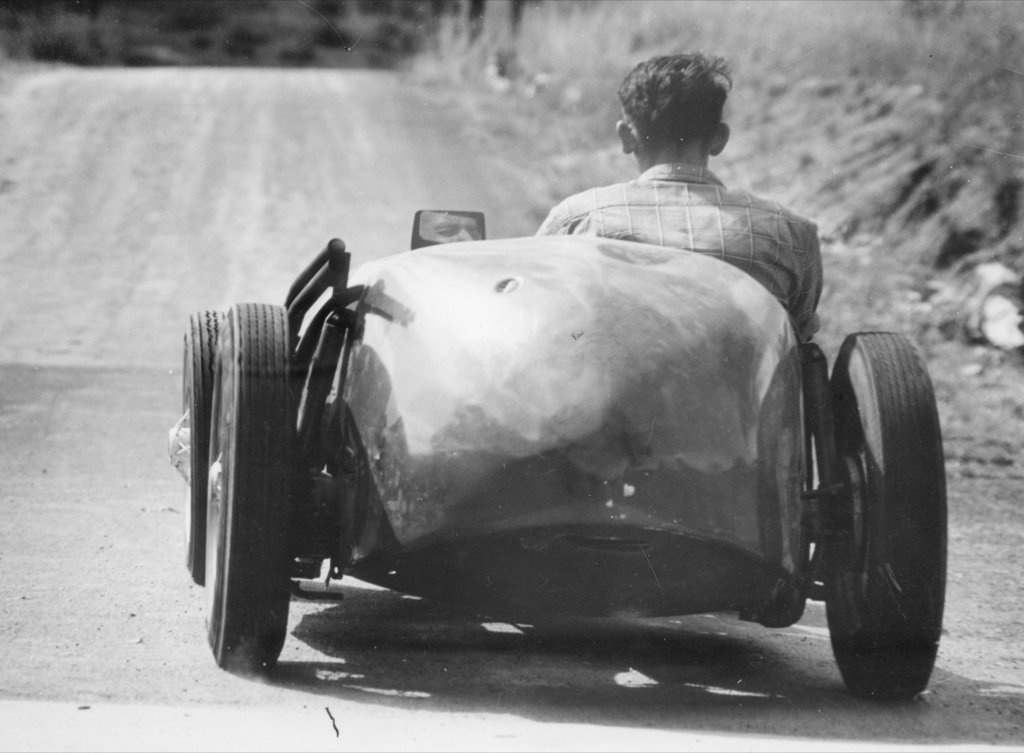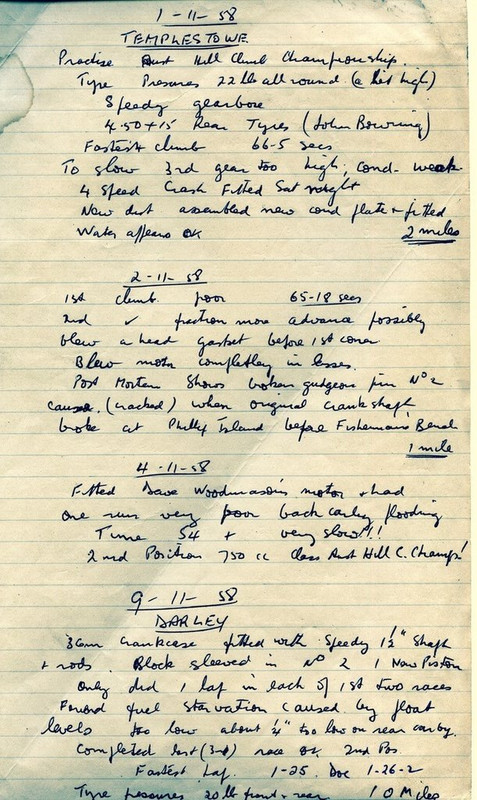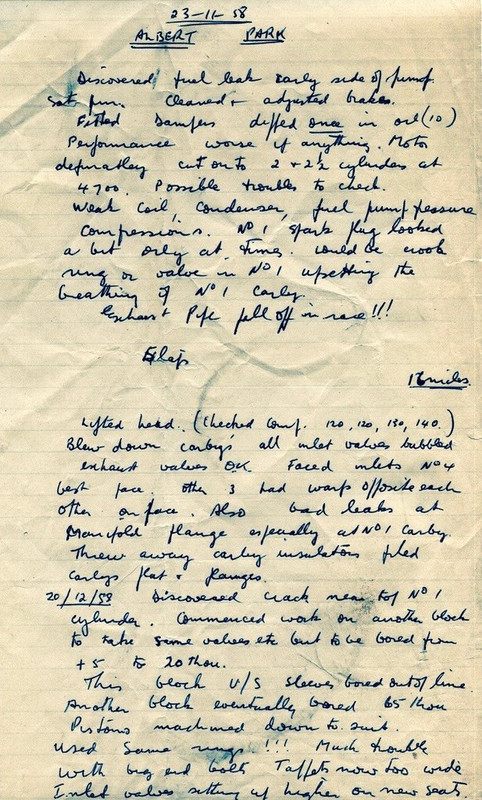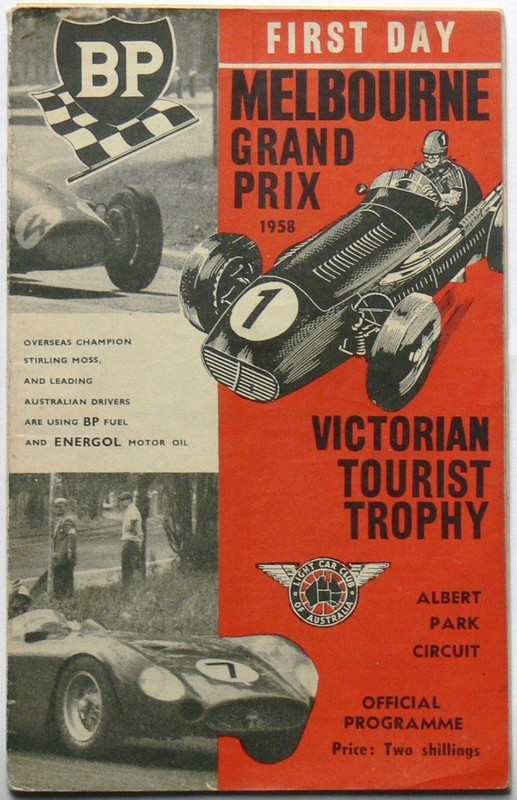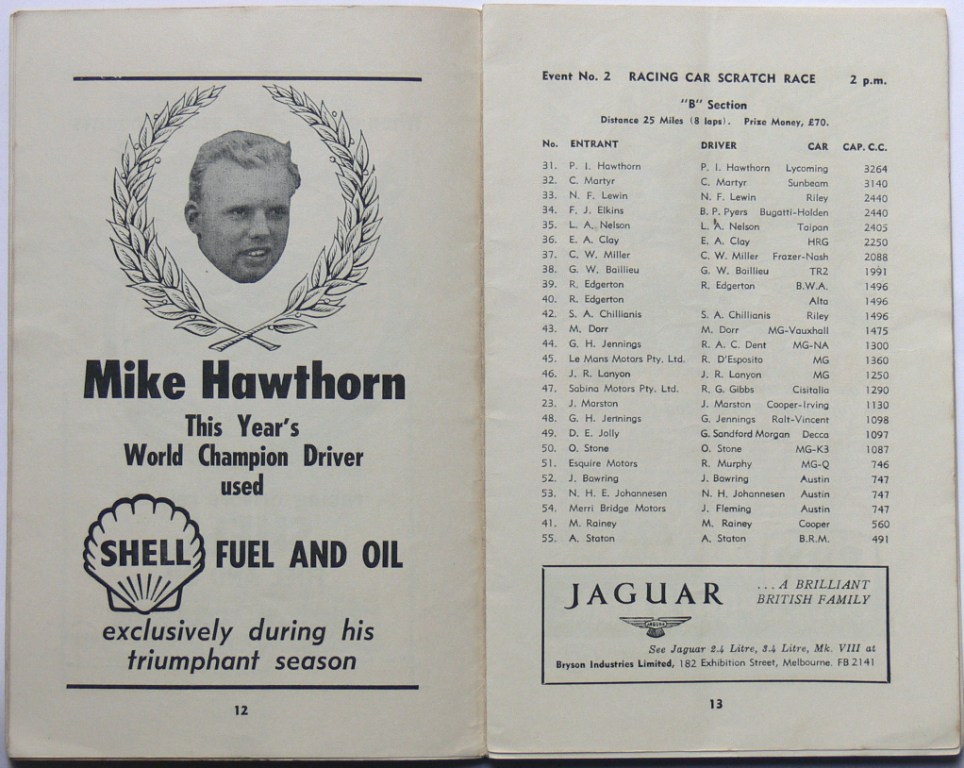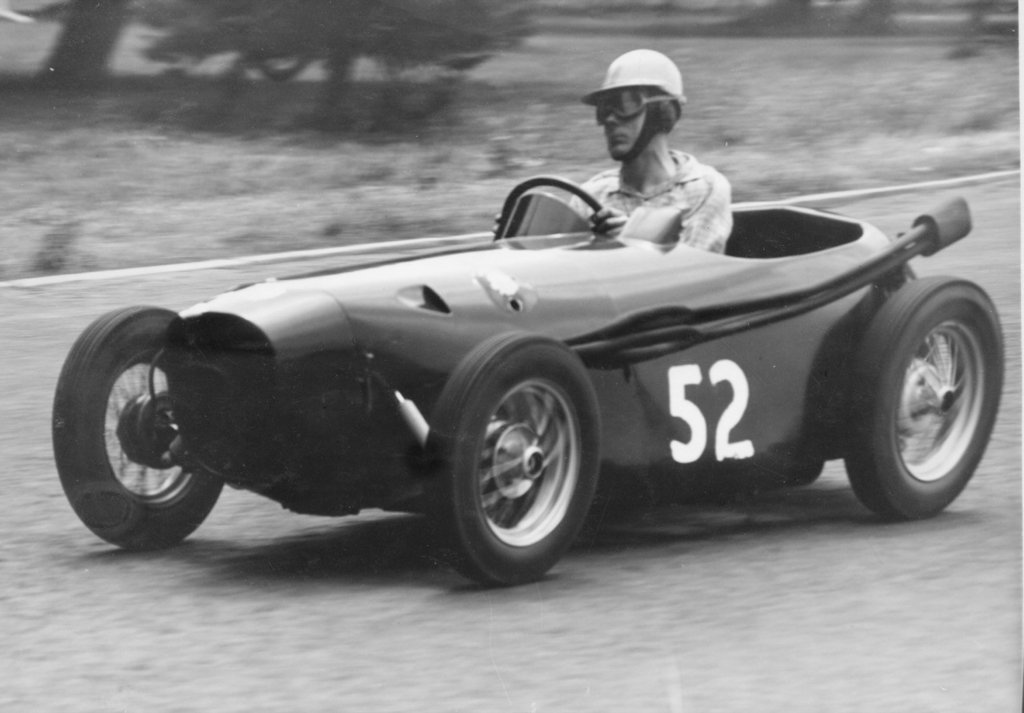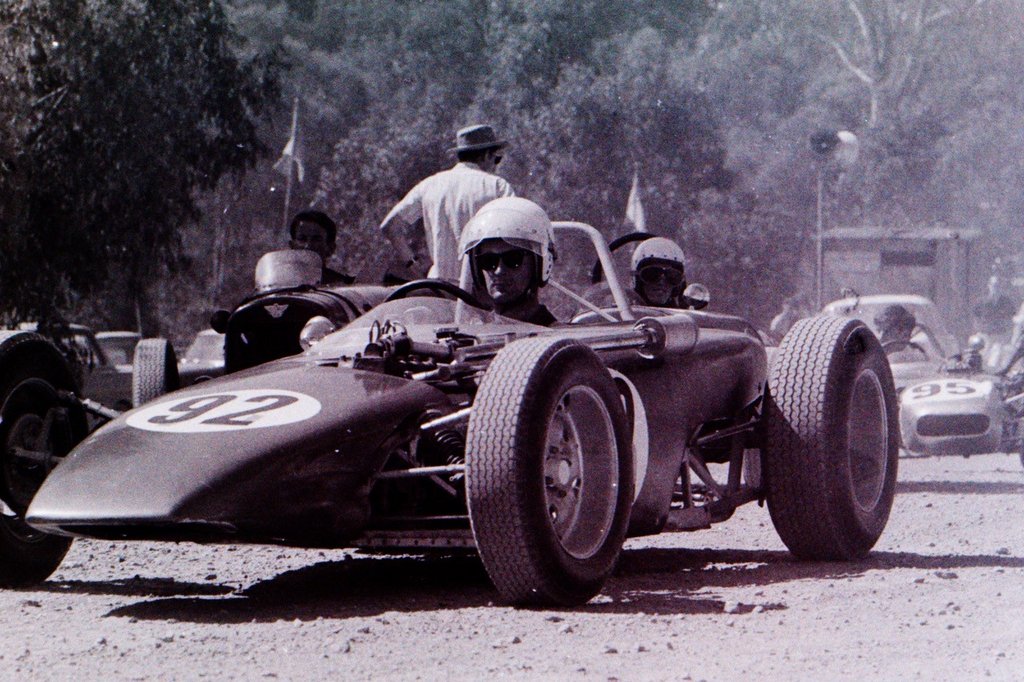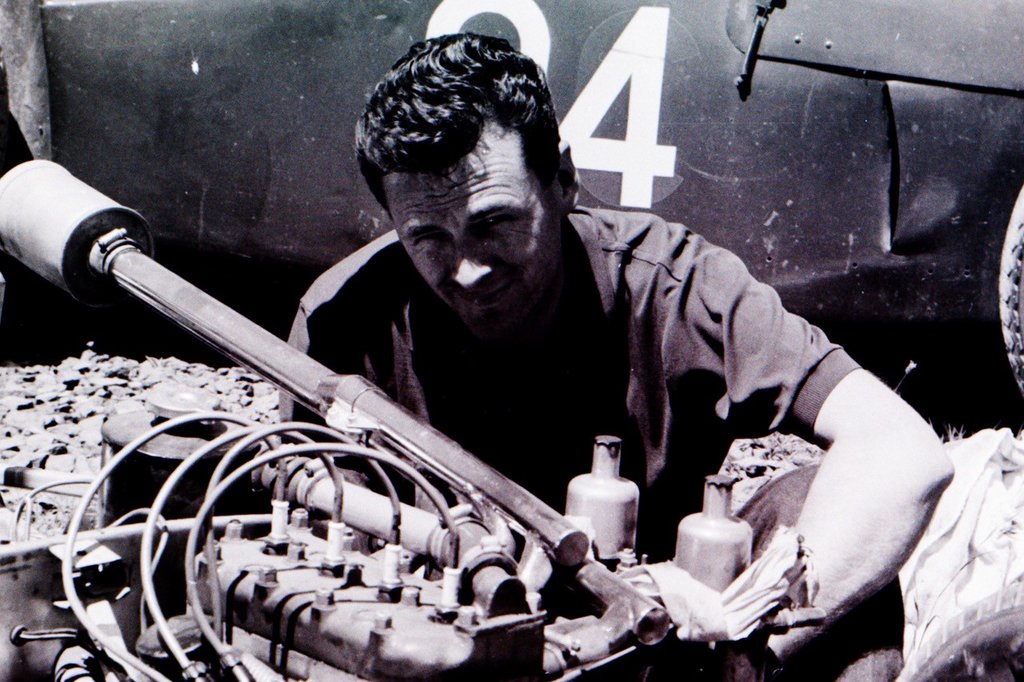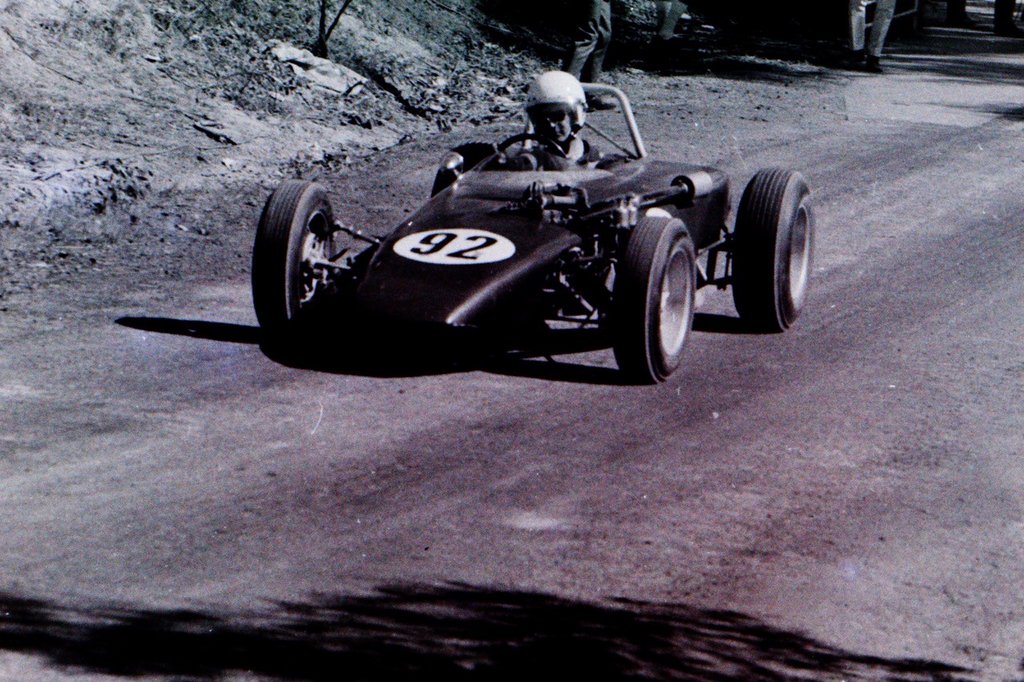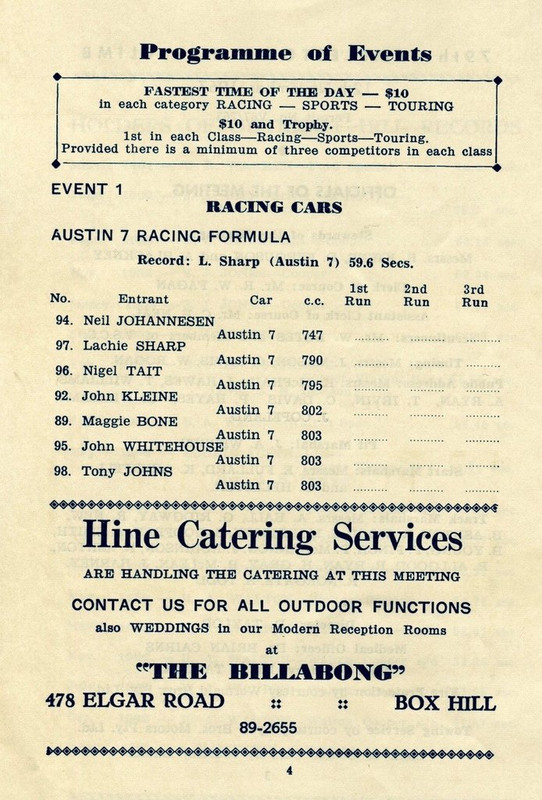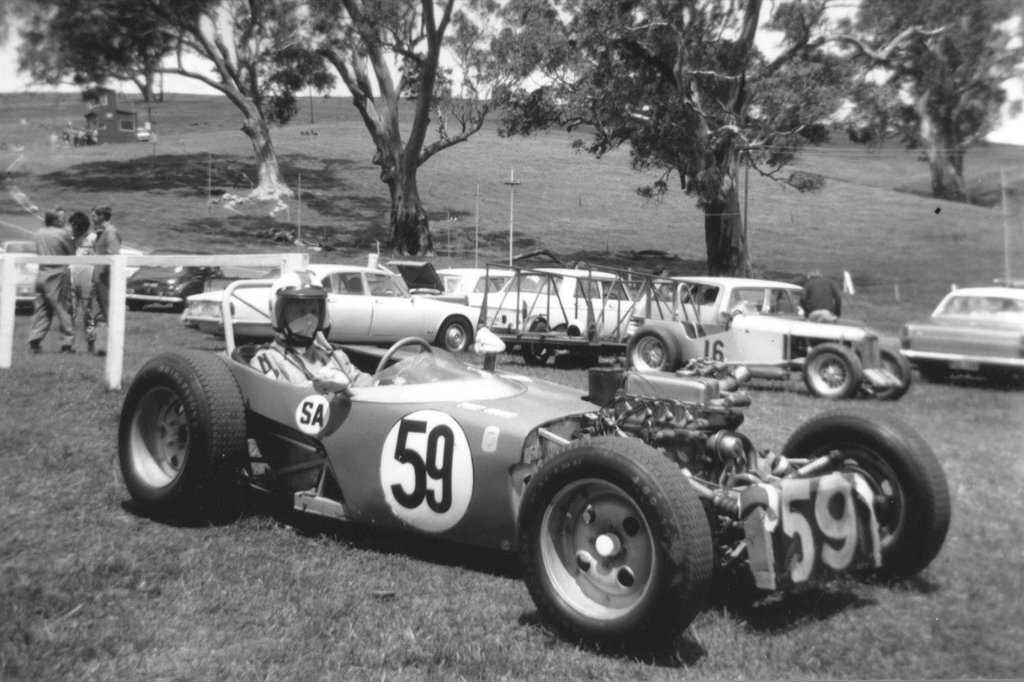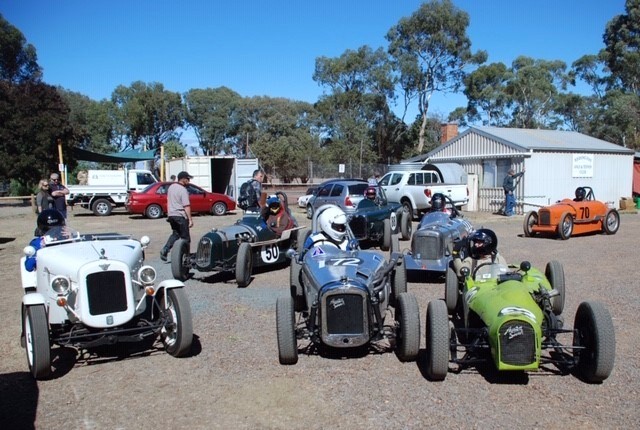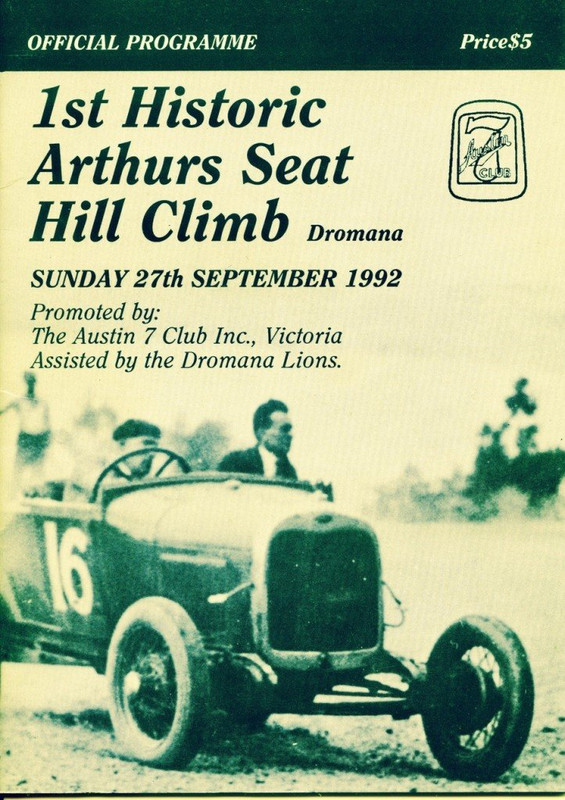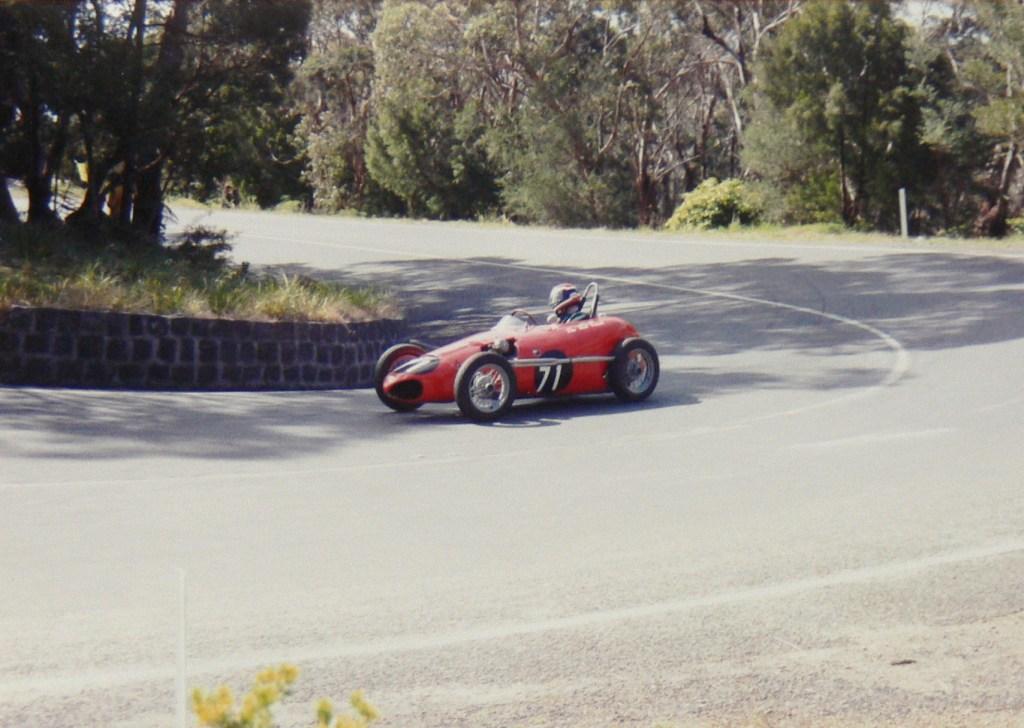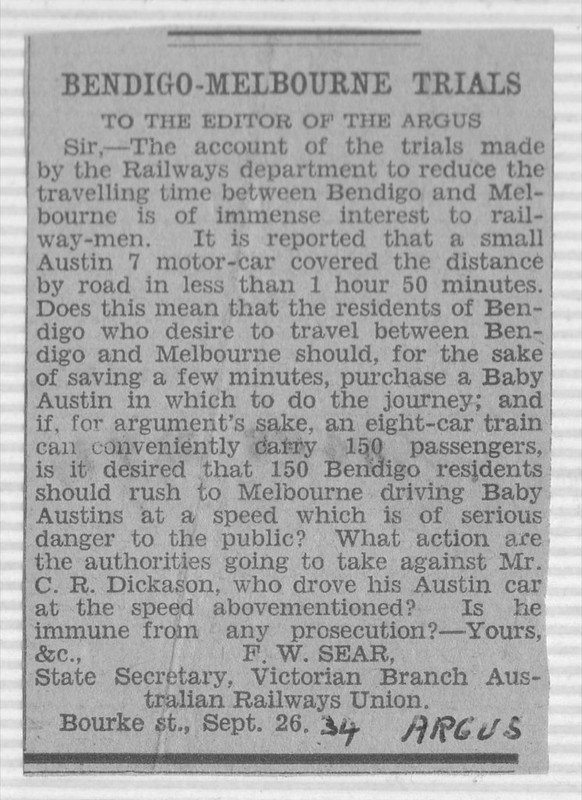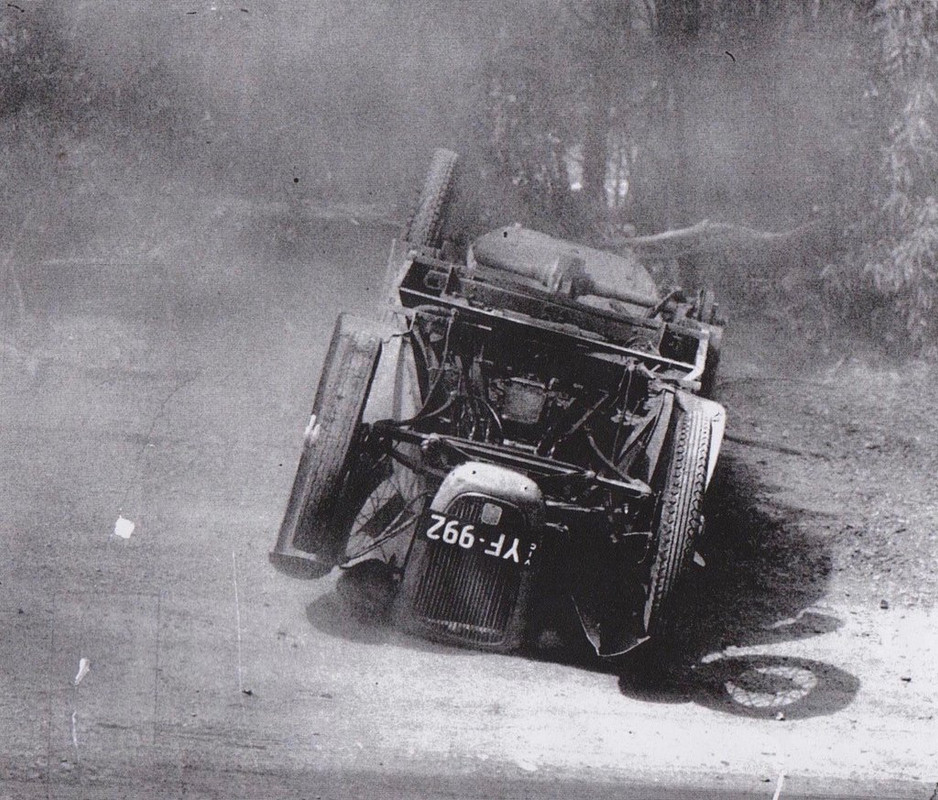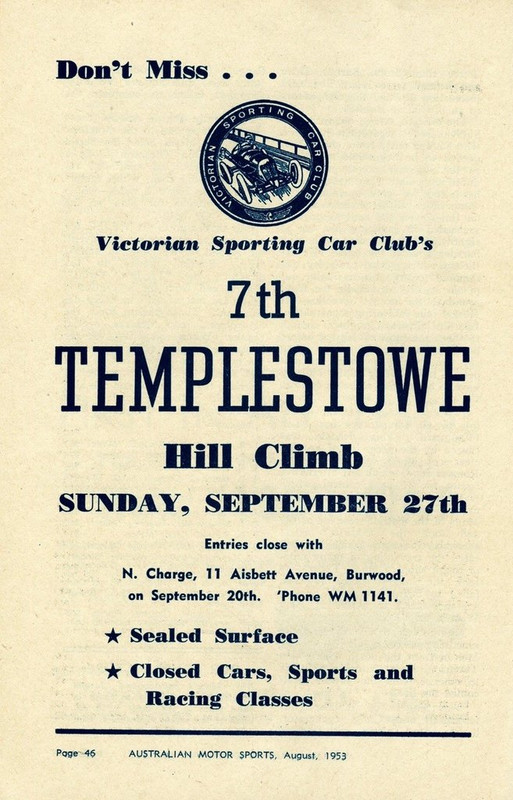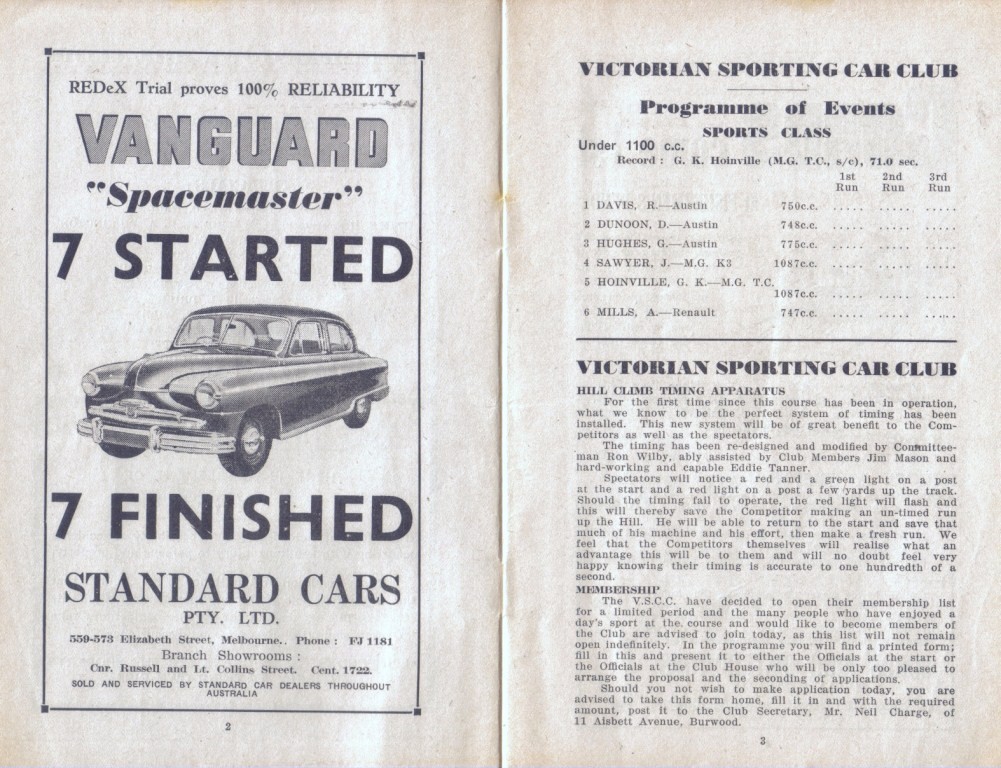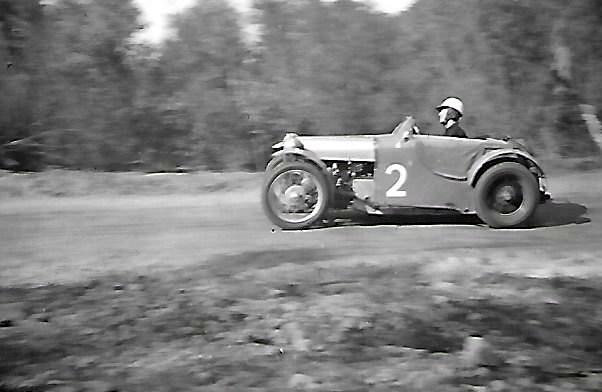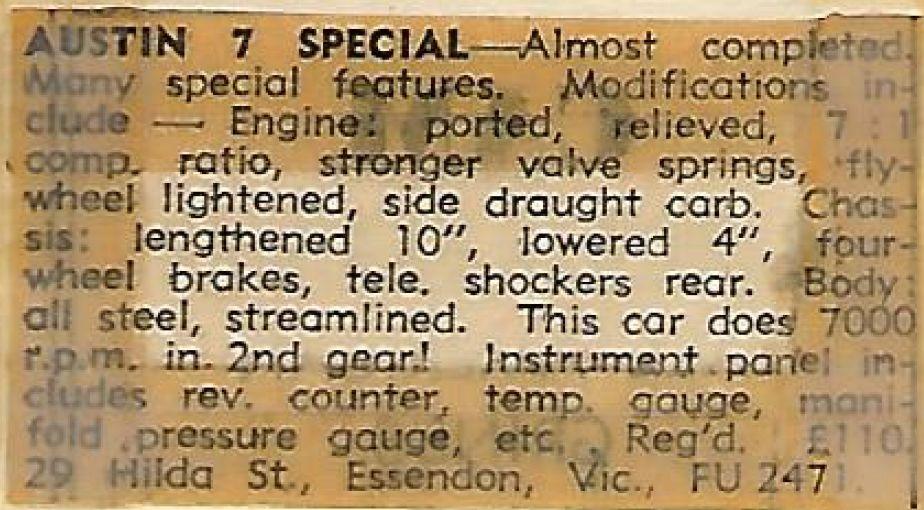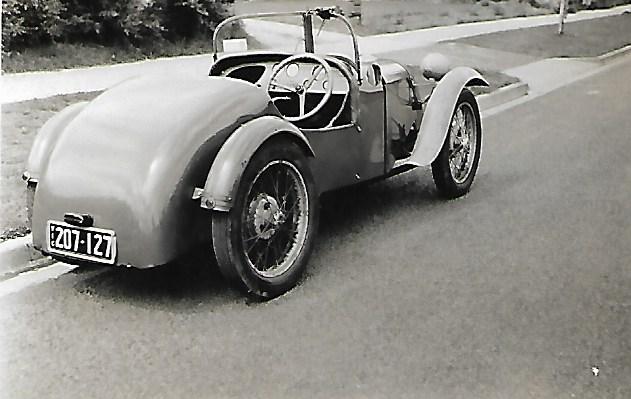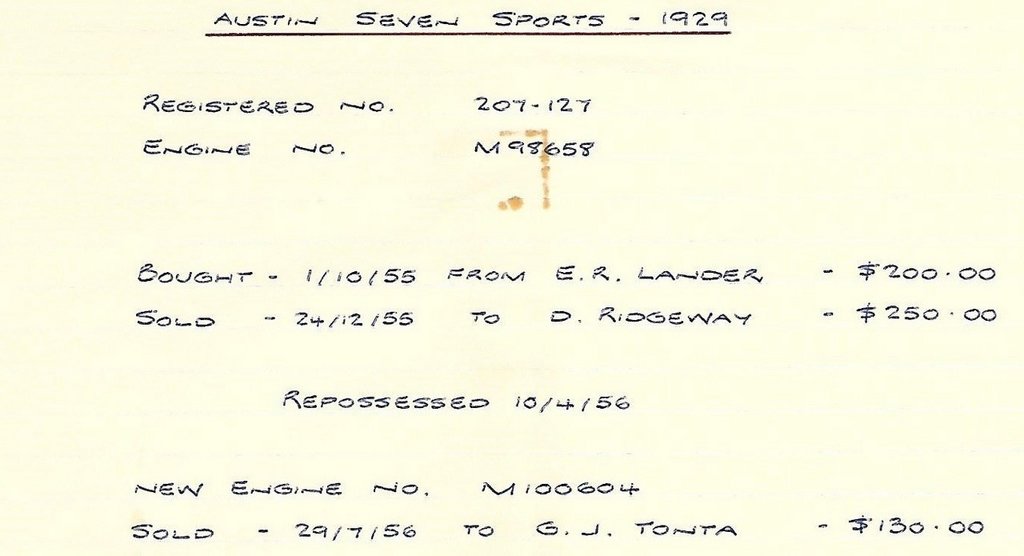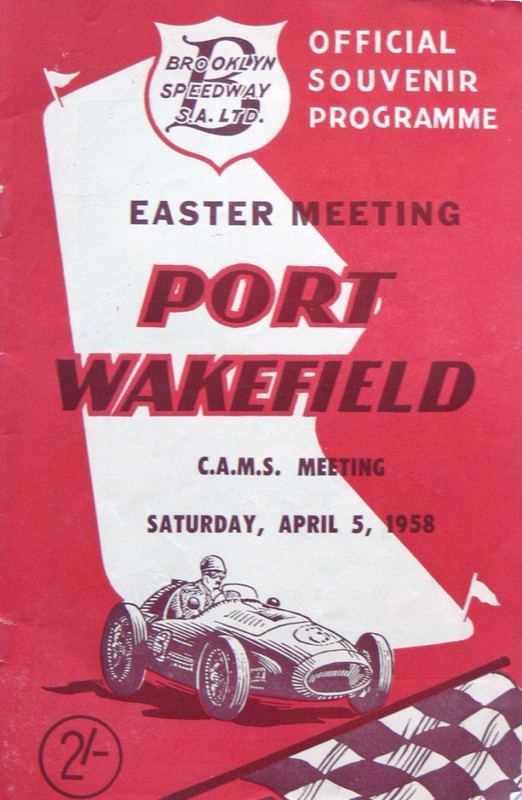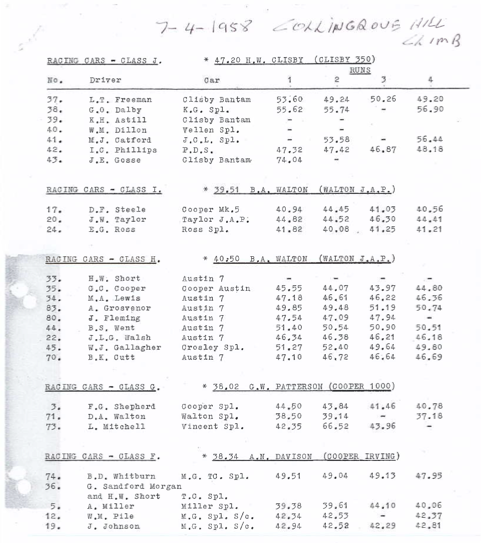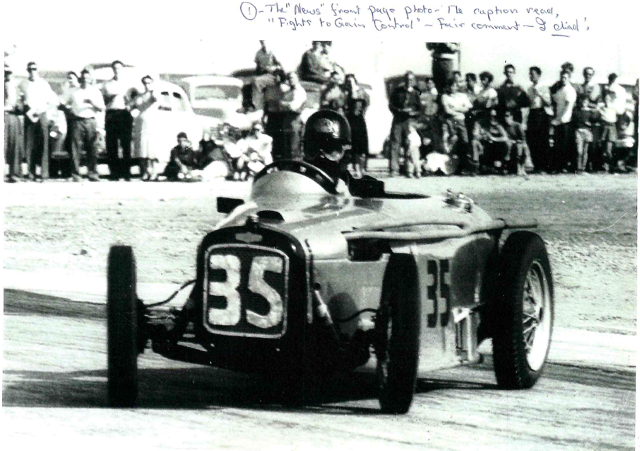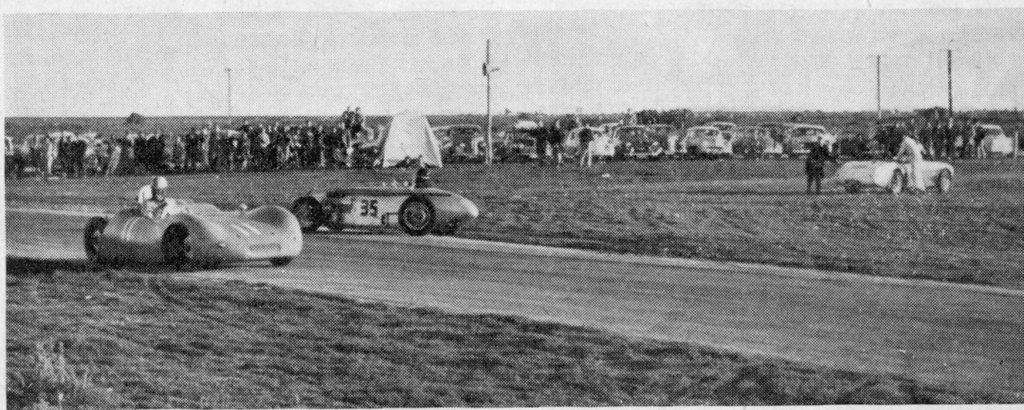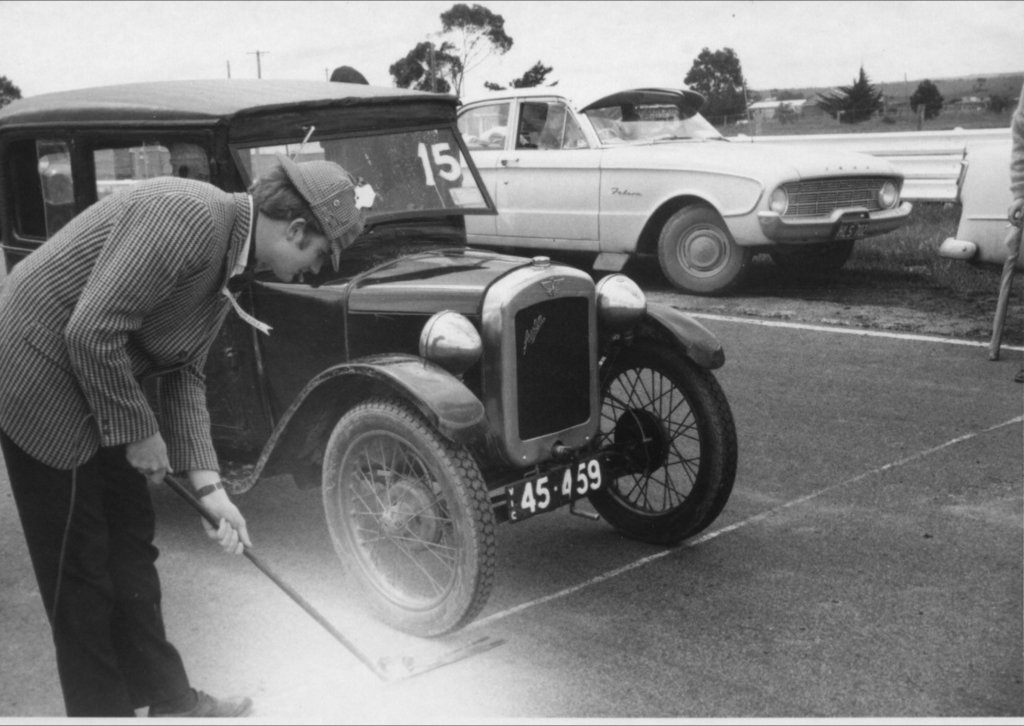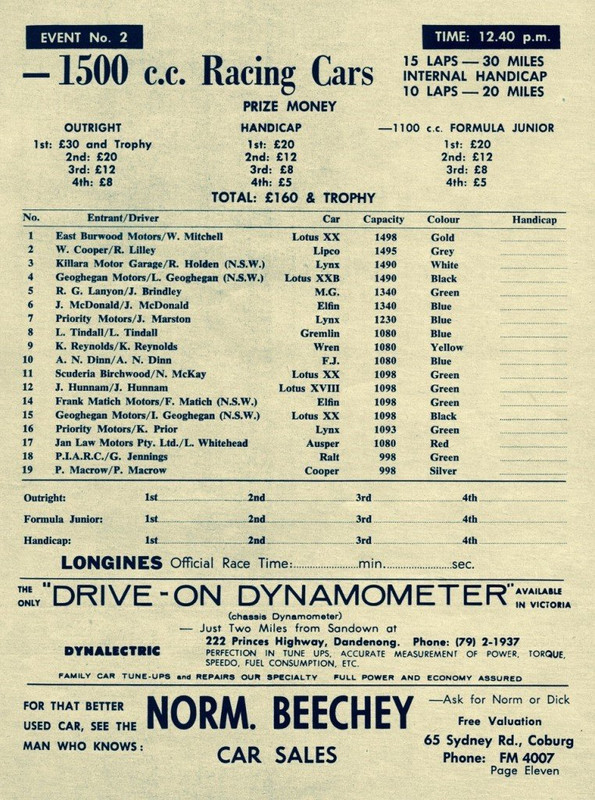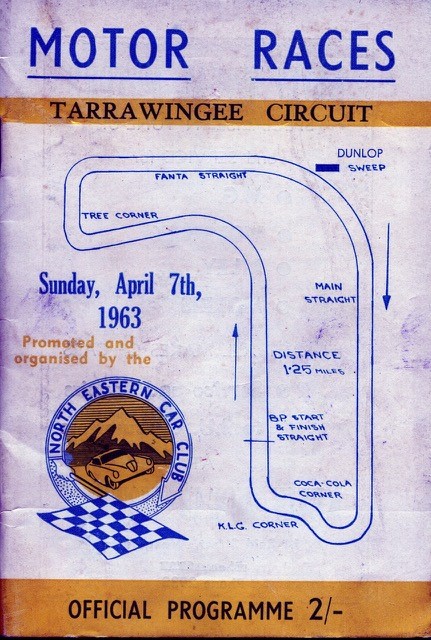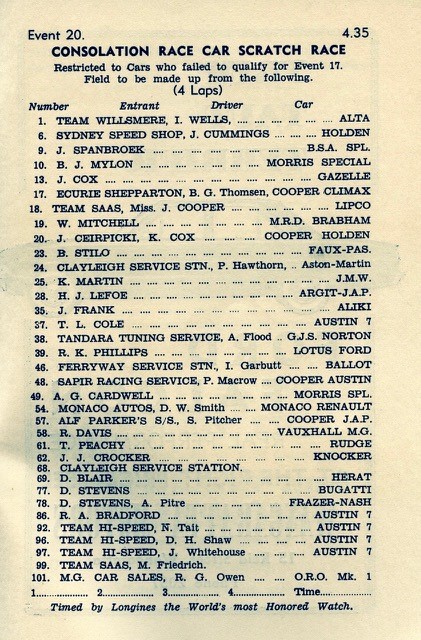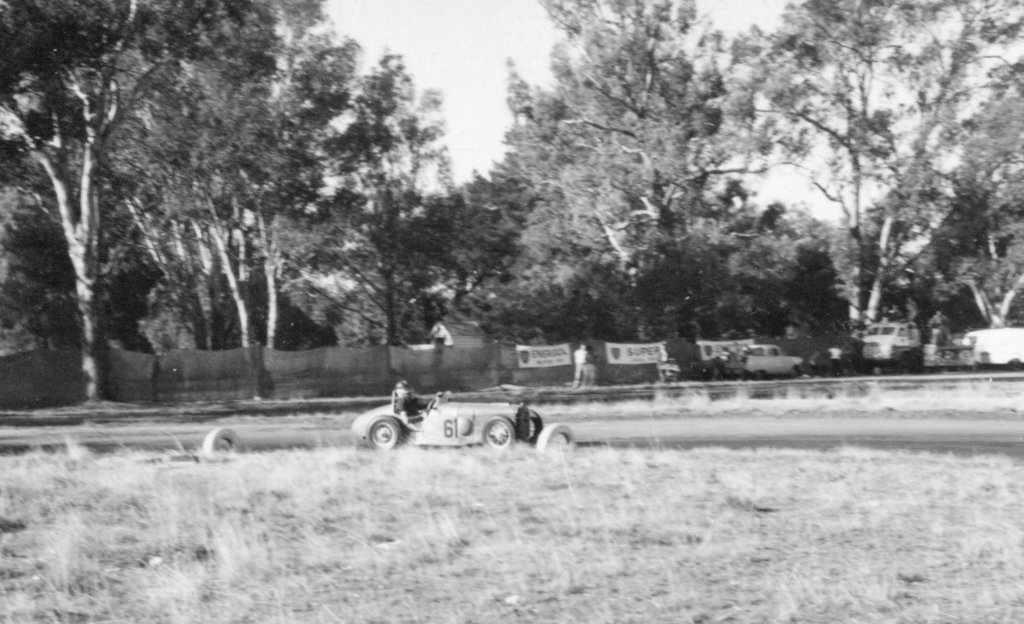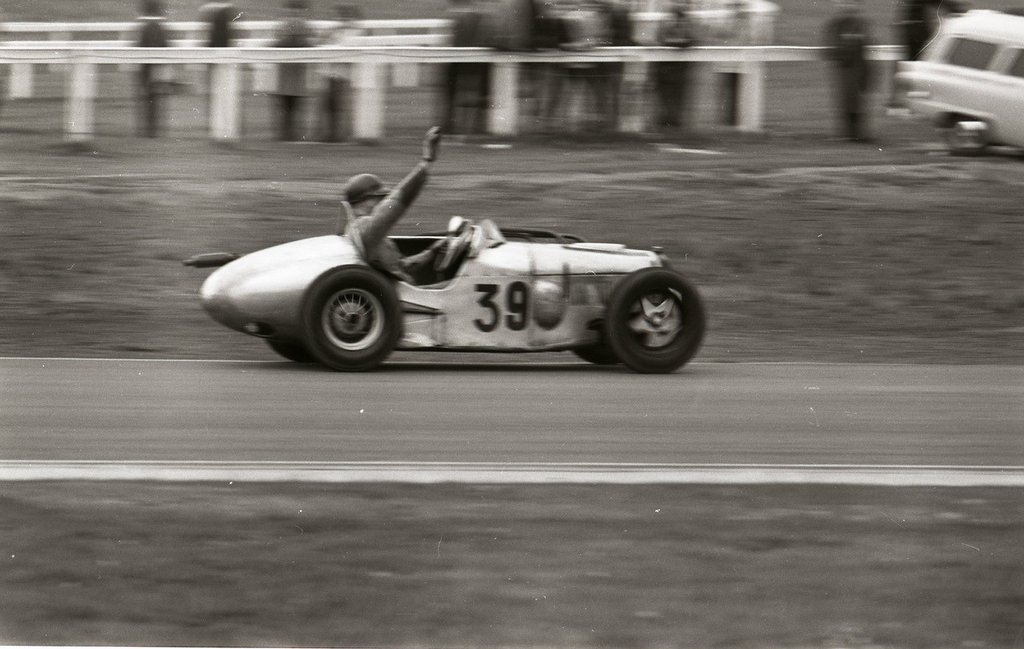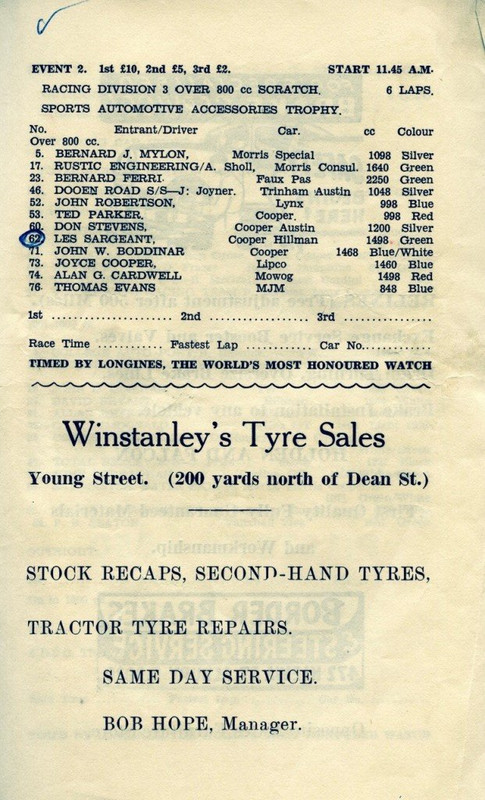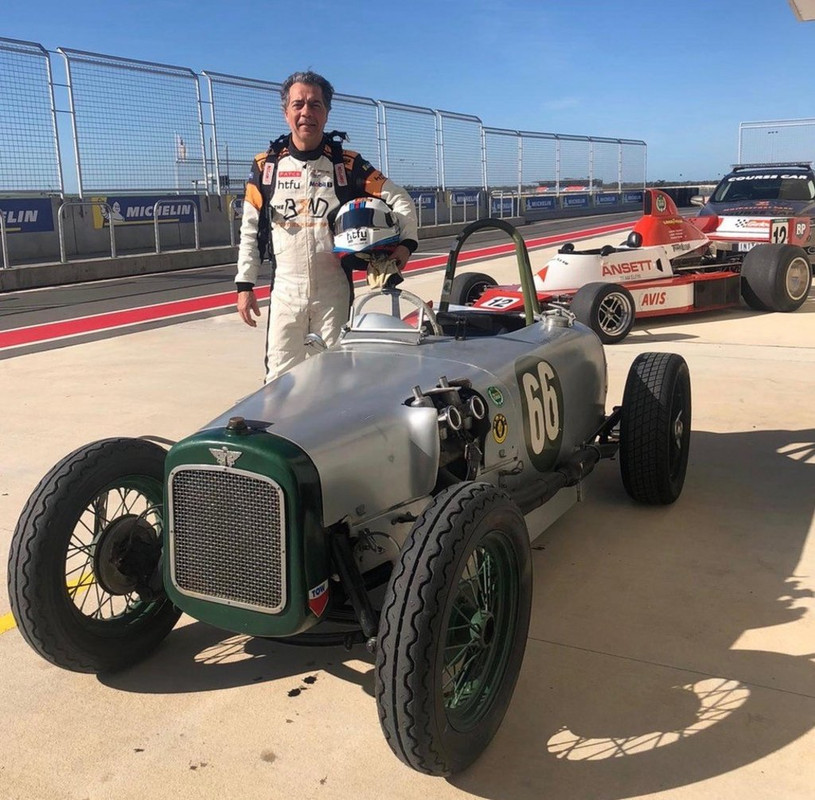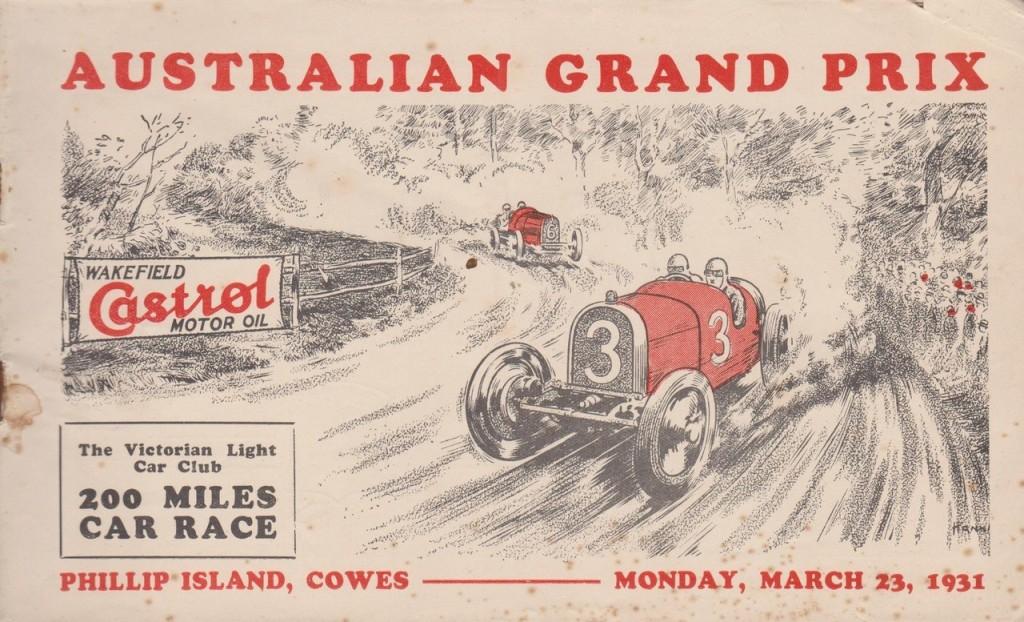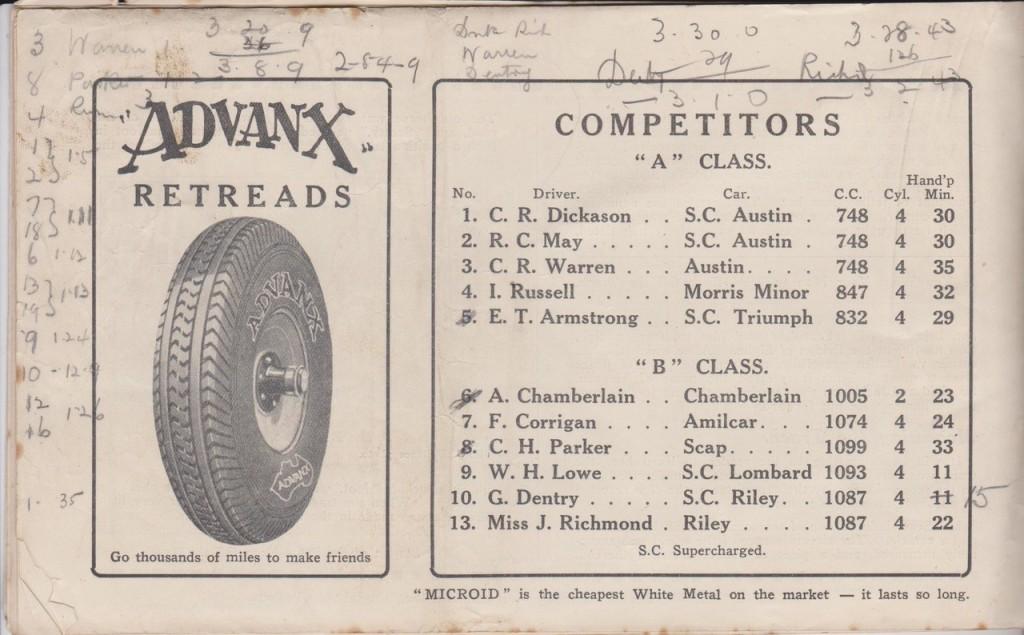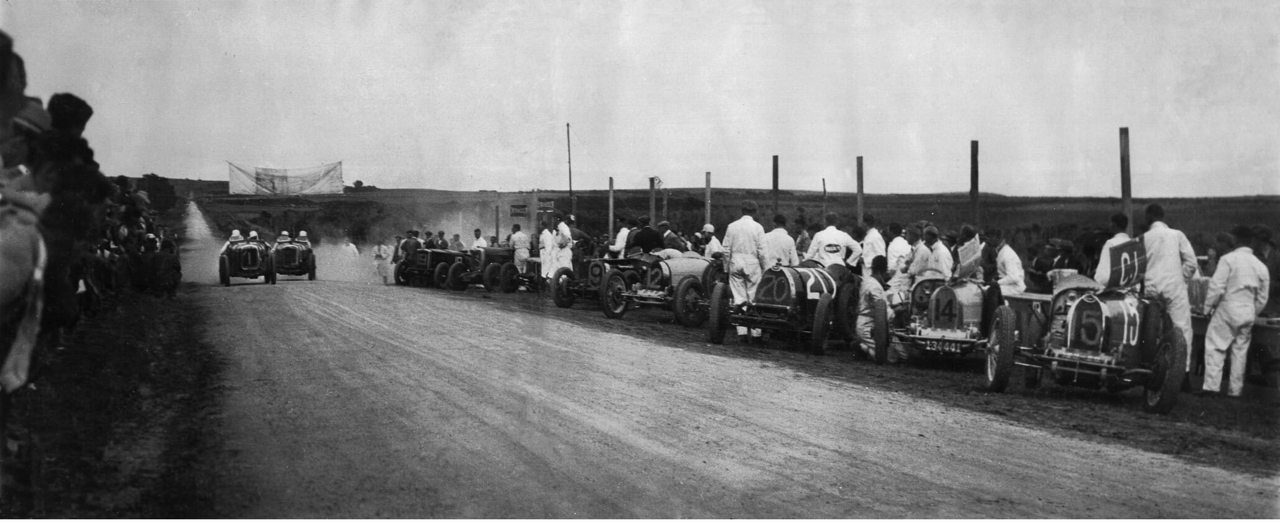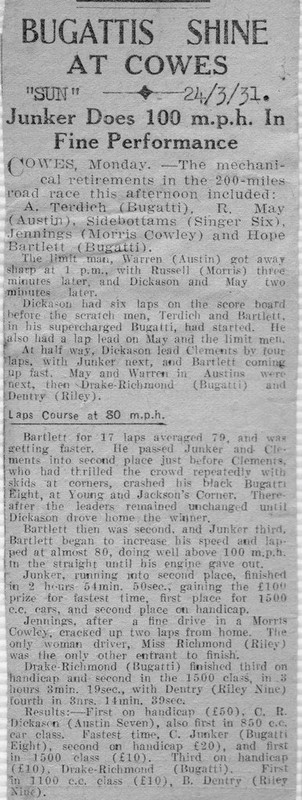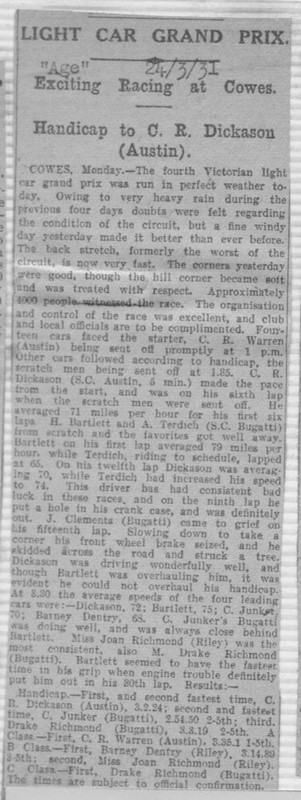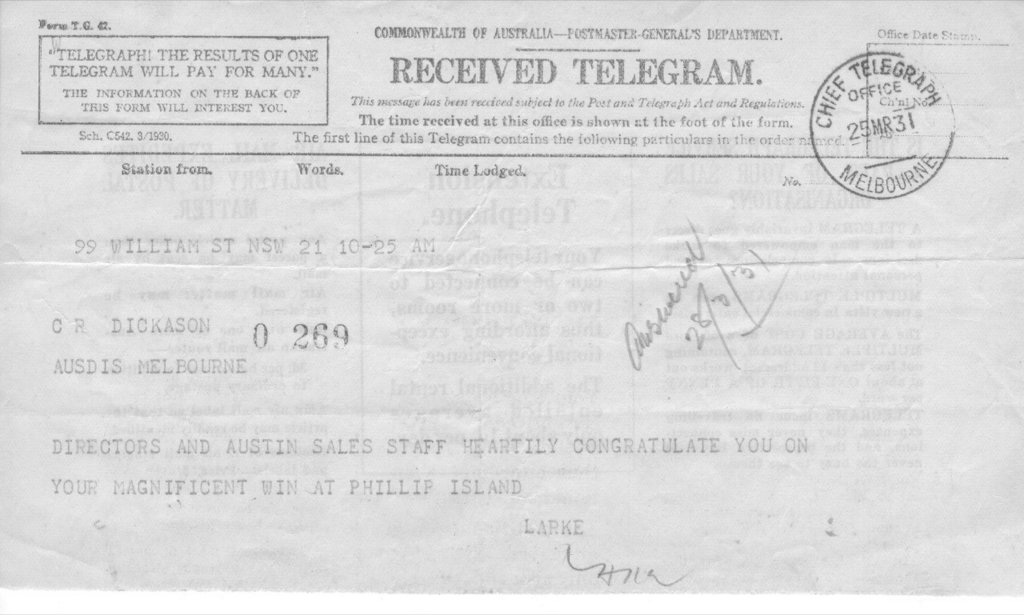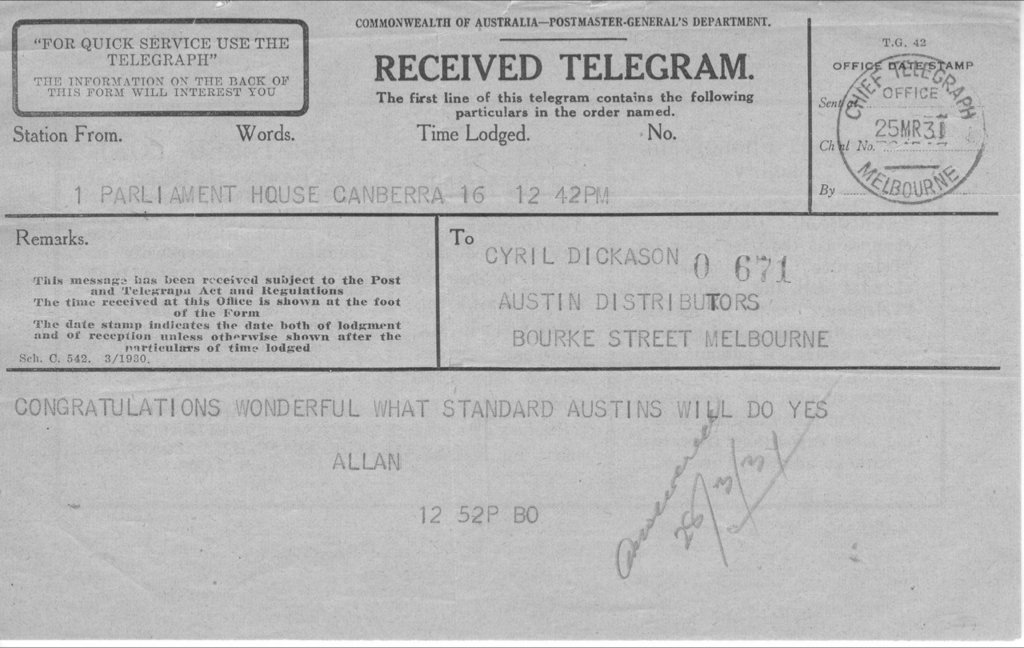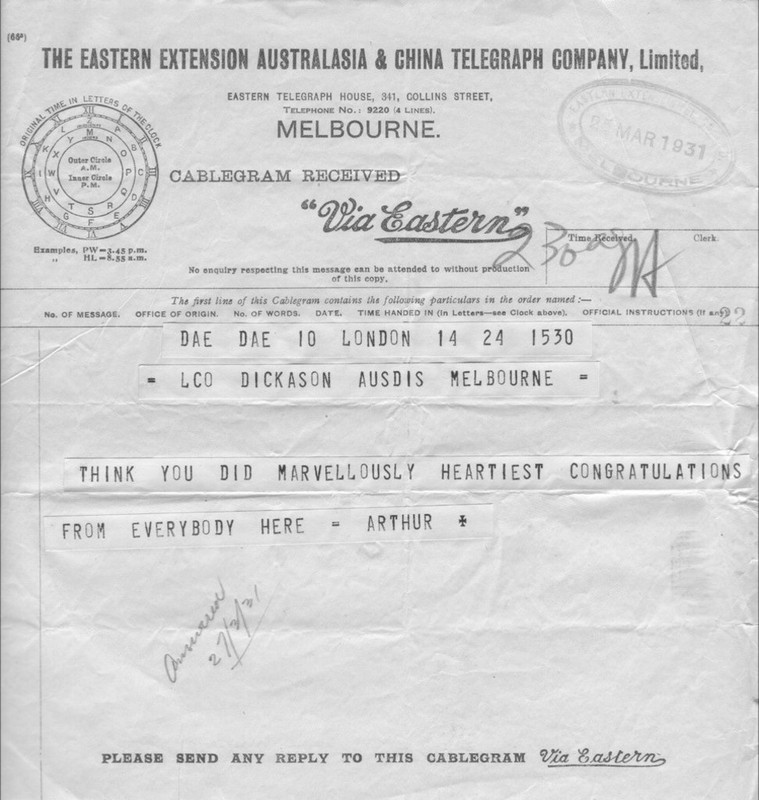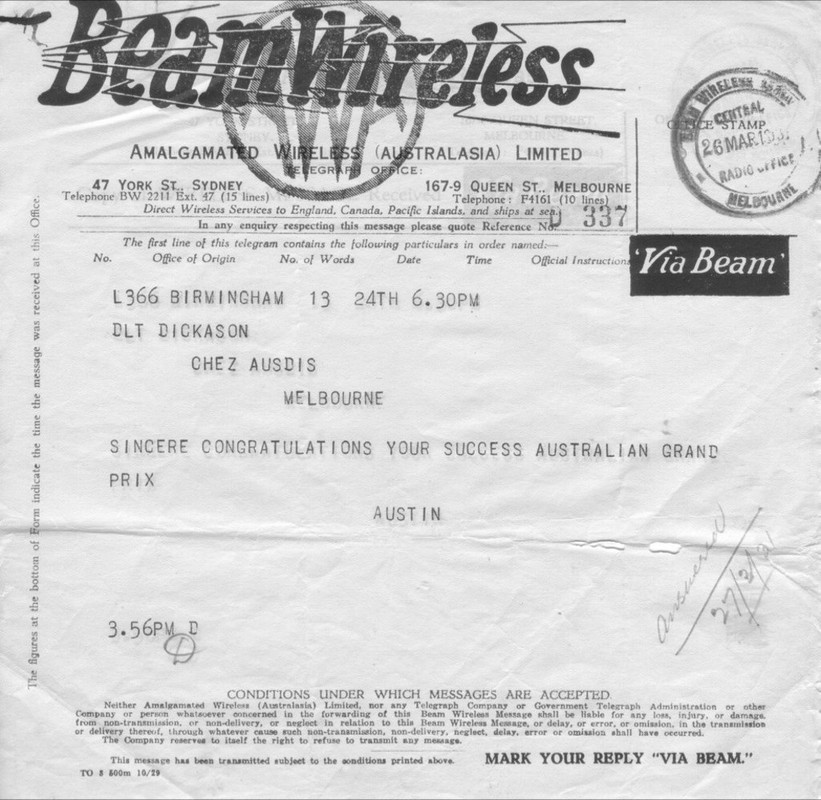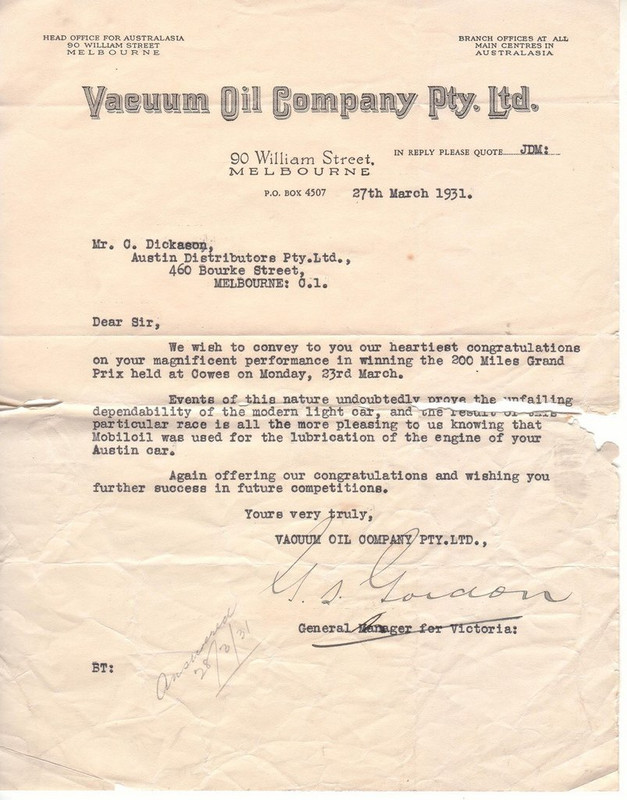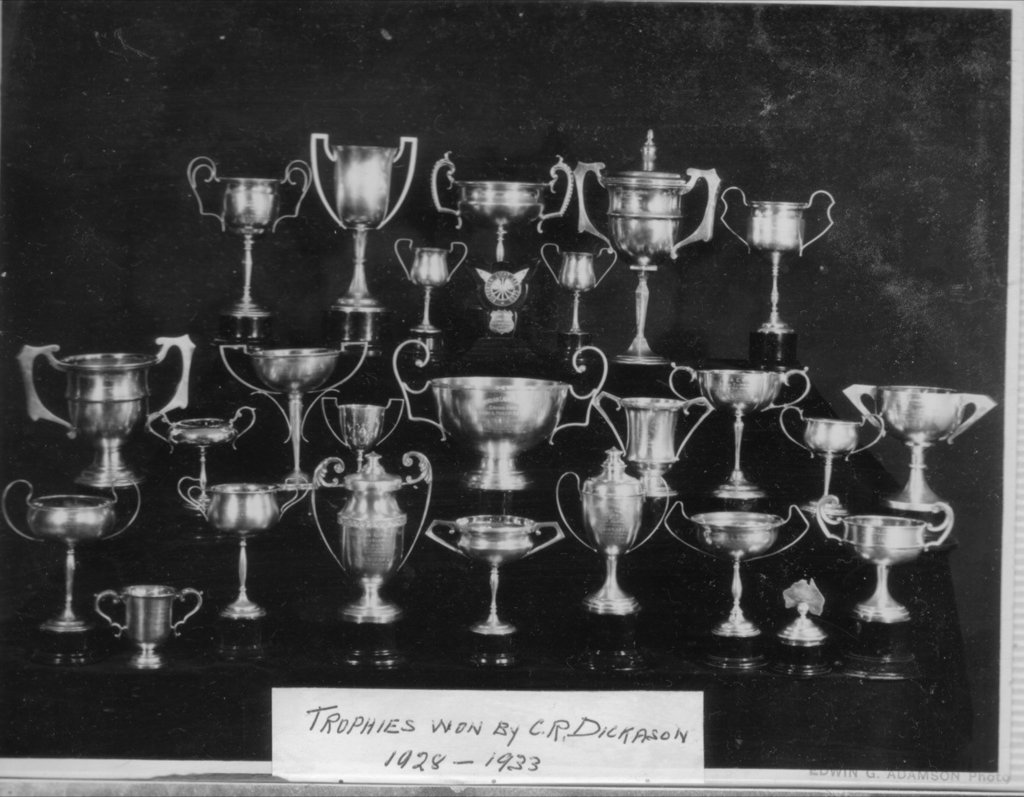Tony continues on from post 240 with this part 3 relating how the 1931 Australian GP unfolded...
The report of the race published in the Melbourne Truth newspaper on the 28 March 1931 makes interesting reading.
Having removed the supercharger from his Riley, Barney Dentry’s handicap was increased from 11 to 15 minutes.
The scene at the start was a bright affair, reminiscent of similar occasions on Brooklands famous track. Drivers, mechanics and their pit attendants in their white Xpando overalls, presented a scene of activity while adjustments and arrangements were being completed.
The organisation throughout the race could not have been better, for which the Victorian Light Car Club is to be heartily congratulated.
Sharp at one o’clock the starter and referee, Mr O.F. Trough, who fortunately for spectators, has always proved a martinet for punctuality, sent Warren (Austin) on his journey. From then onwards, at the handicap intervals, the field was despatched.
From the outset, Dickason (Austin) the third man away, made the pace a scorcher, and with his handicap advantage of 30 minutes from the scratch men, was obviously all out to pile up a huge lead, which might cause the higher-powered cars to crack up in an attempt to overhaul him.
That these tactics were sound were proved by the fact that no less than seven competitors failed to finish, either through mishap or mechanical trouble.
Dickason’s first lap was timed at over 71 miles per hour, which was greater than the fastest time recorded in last year’s race, and by the end of the third lap he had taken the lead.
At this stage, Lowe (Lombard), after safely negotiating Young and Jackson’s corner on the first lap, stripped his gears and retired from the race.
By the time the two scratch men Hope Bartlett and Arthur Terdich were sent away, Dickason had completed 5½ laps, May 4, Warren 4, Russell 4, Jennings 3, Miss Richmond 3, Dentry 2½, Junker 1½, Clements 1½ , and Drake-Richmond 1½ .
It was interesting to note the different tactics adopted by the two scratch men. Bartlett decided to “go for the doctor” from the word “go,” and on his first lap was timed at the sensational speed of 79.1 miles per hour, which is the highest ever recorded on the Cowes course.
It remained to be seen whether he could maintain this extraordinary high speed, and if he could, he had every chance of overhauling Dickason.
Terdich, on the other hand, lapped steadily at between 65 and 70 miles per hour, hoping, no doubt, that the higher speed of his competitors would eventually force them out of the race. Unfortunately, during his ninth lap, he broke a connecting rod just before reaching Hell corner, which definitely put him out of the race.
From this time onwards, the race resolved itself in a duel between Dickason and Bartlett, with Bartlett gaining ground on every lap. However, in his second last lap, engine trouble developed, and he was forced to retire.
Driving magnificently and handling his tiny car in a masterly way on the corners, Dickason eventually finished in the very fine time of 3 hours 2 minutes 24 seconds, thus winning the race on handicap and recording second fastest time of the day.
The results, subject to official confirmation, were as follow:-
Handicap.-First, and second fastest time, C.R. Dickason (Austin), 3 hrs.2 min. 24 sec.: second and fastest time, C. Junker (Bugatti),
2.54 2-5th; third, Drake Richmond (Bugatti) 3.3.19 2-5th.
A Class,- First, C.R. Warren (Austin), 3.35.1 1-5th.
B Class,- First, Dentry (Riley), 3.14.39 3-5th; second, Miss Joan Richmond (Riley)
C Class,- First, Drake Richmond (Bugatti).
With the track in perfect condition, serious mishaps were fortunately avoided this year, although J. Clements gave spectators at Young and Jackson’s corner a thrill in his fifteenth lap.
Braking, just before reaching the corner, his near side front brake seized, with the result that he skidded violently from one side of the track to the other.
It was only by skilful driving driving that he avoided smashing into a tree, and eventually came to a standstill in a ditch.
It must be said that as a spectacle the race was not very attractive. The competitors, with few exceptions, corned with cow-like placidity, and the crowds did not get the “corner thrills” they expected.
Miss Joan Richmond was the only lady driver in the race. You can’t tell her that number 13 is unlucky, for she chose this number in the race, and has it in her registered touring figures, and yet she was one of the few competitors to finish.
Dickason’s mechanic, James Long waves to thank Dentry for making room as the Austin overtakes the Riley.
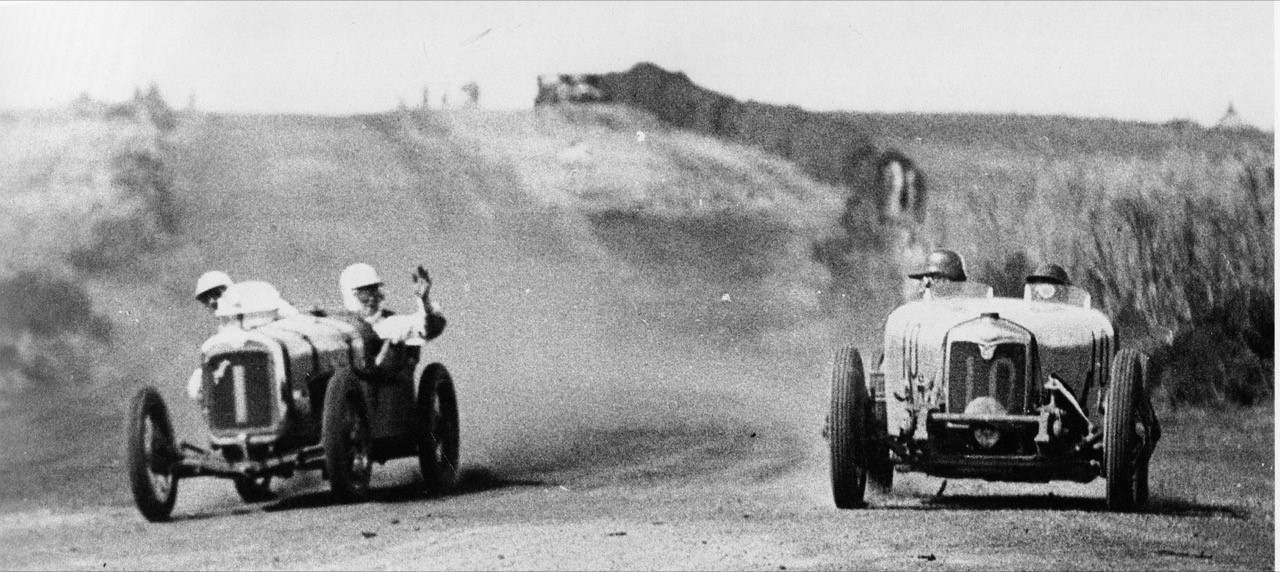
'Wheels in Victoria 1824-1984'. Harold Paynting. Photo credit, Ann Dickason.
Note the banner promoting radio station 3UZ. They were broadcasting the race back to Melbourne listeners for the first time.
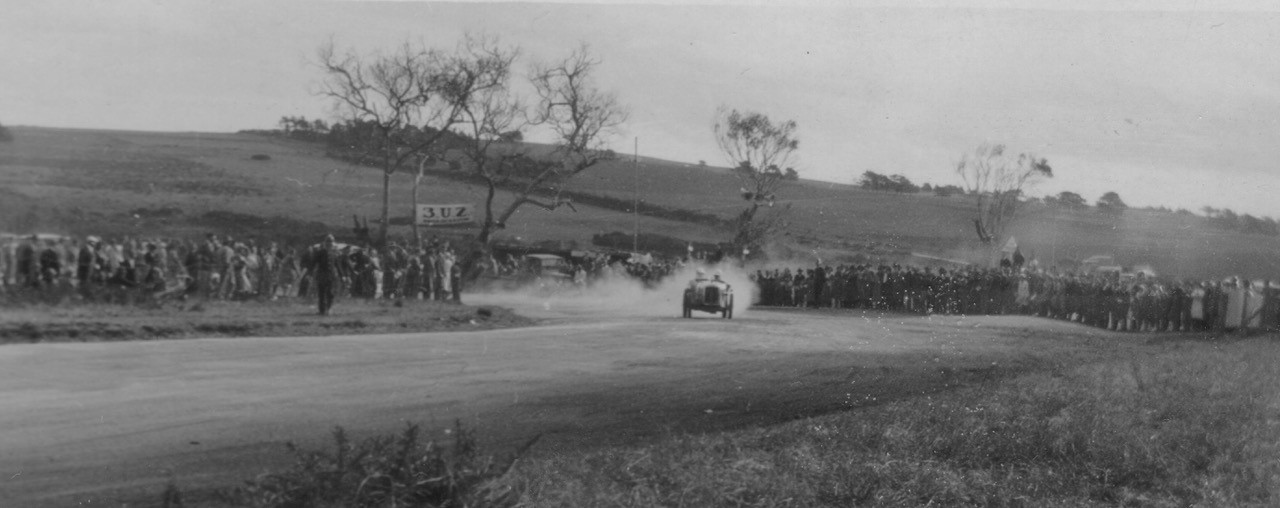
Hope Bartlett had just overtaken Dickason at Heaven corner. Bartlett’s Type 37A Bugatti had won the previous years race with Bill Thompson driving.
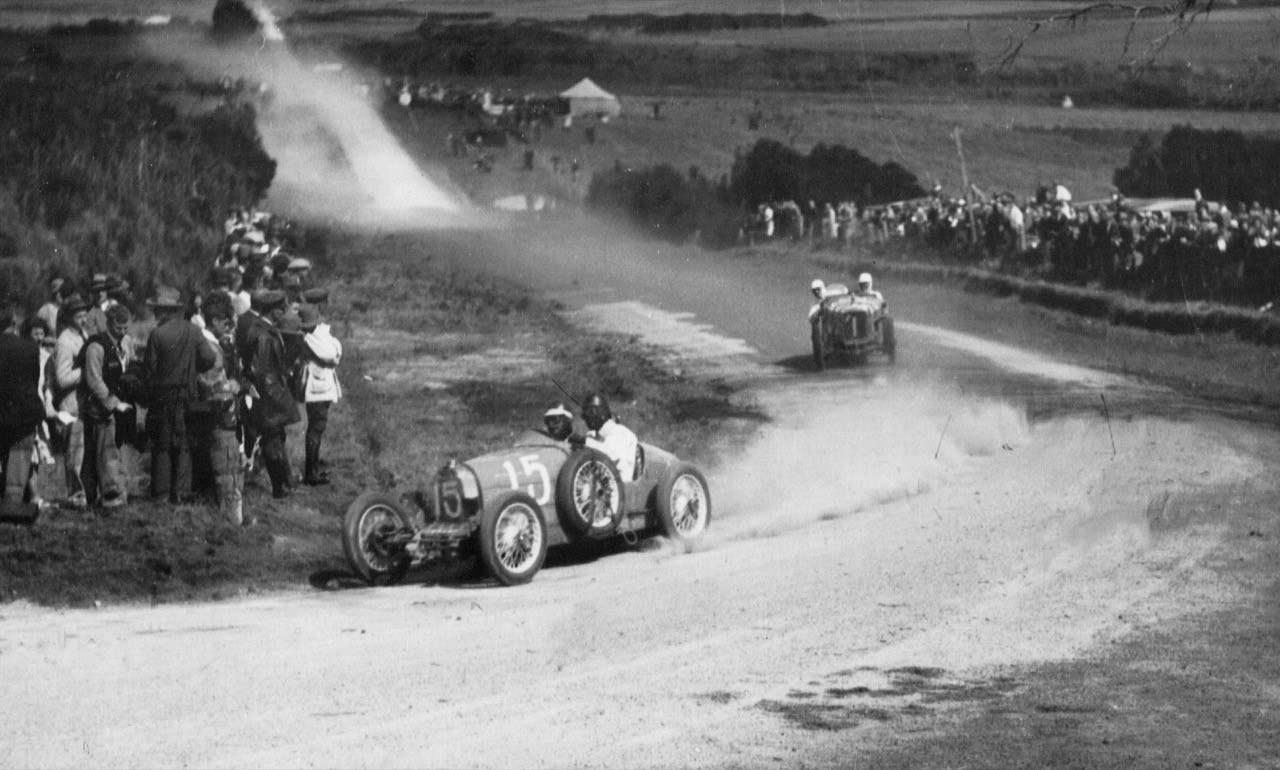
Photo supplied by Tony Davis from the John Sherwood Collection.
Cec Warren in the unsupercharged Austin.

Bob King Collection.
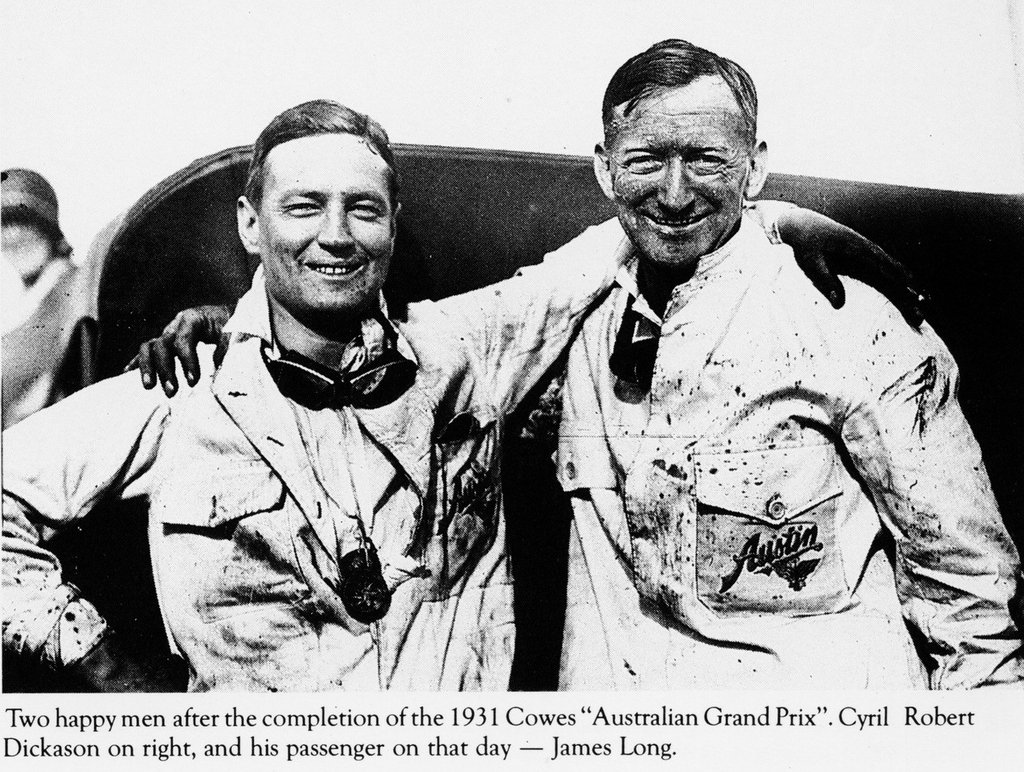
Wheels in Victoria 1824-1984. Harold Paynting. Photo credit, Ann Dickason.
More to follow.
Tony Johns



